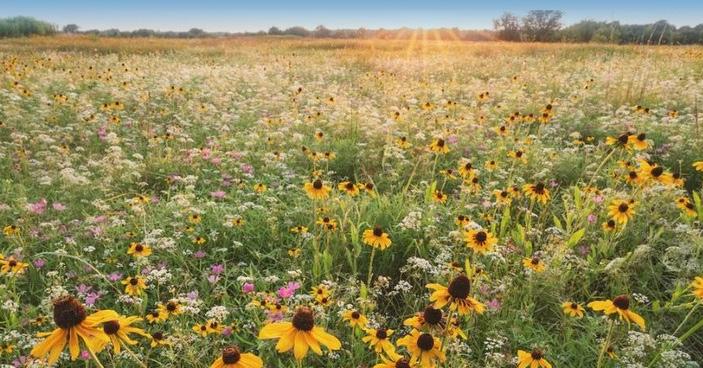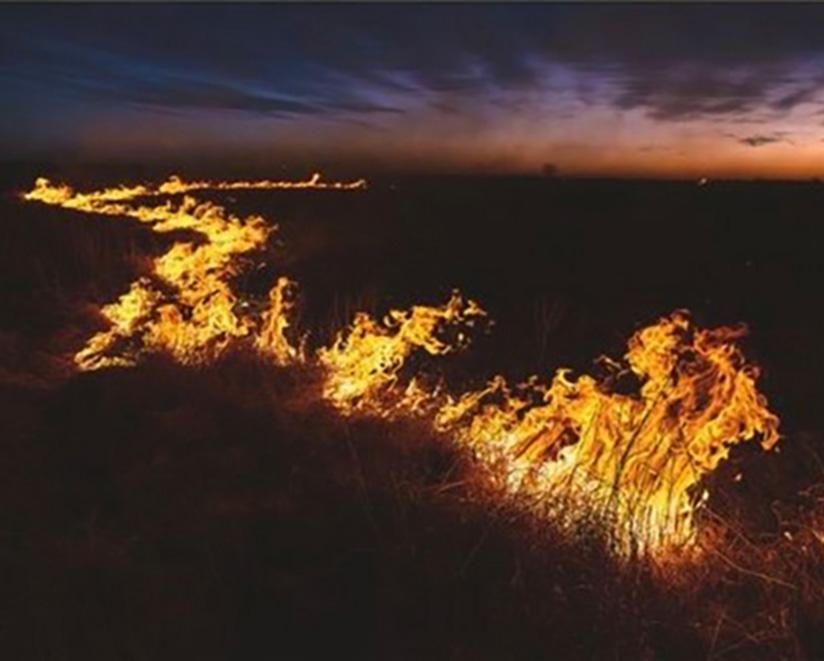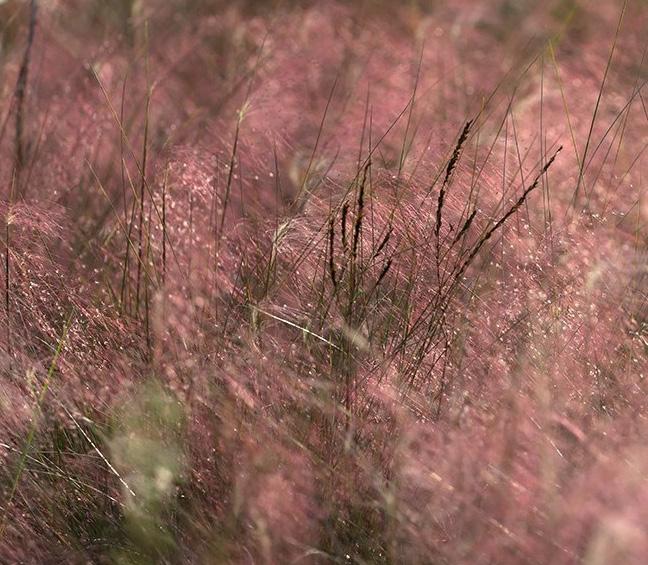




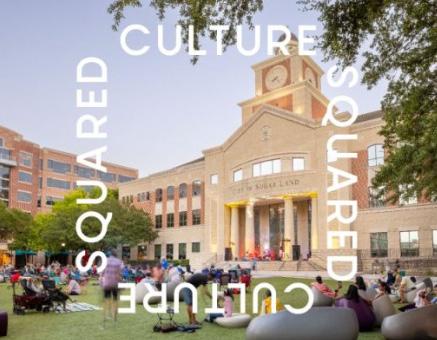



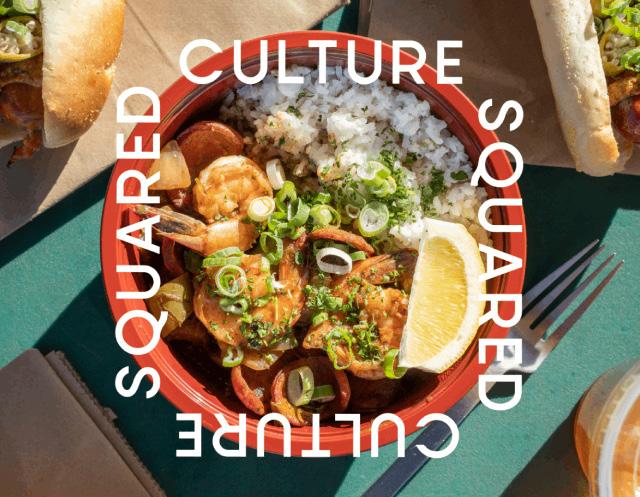
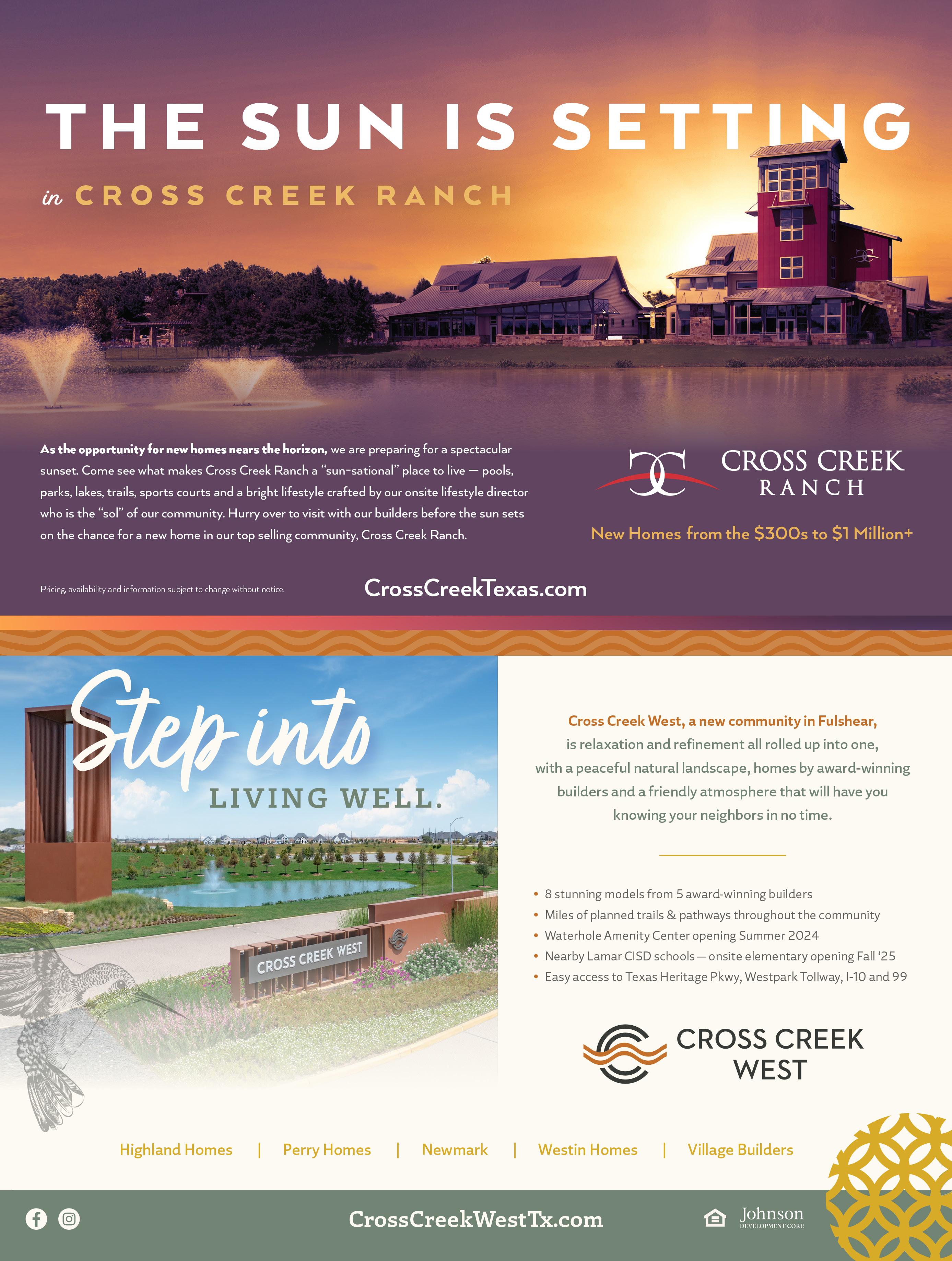



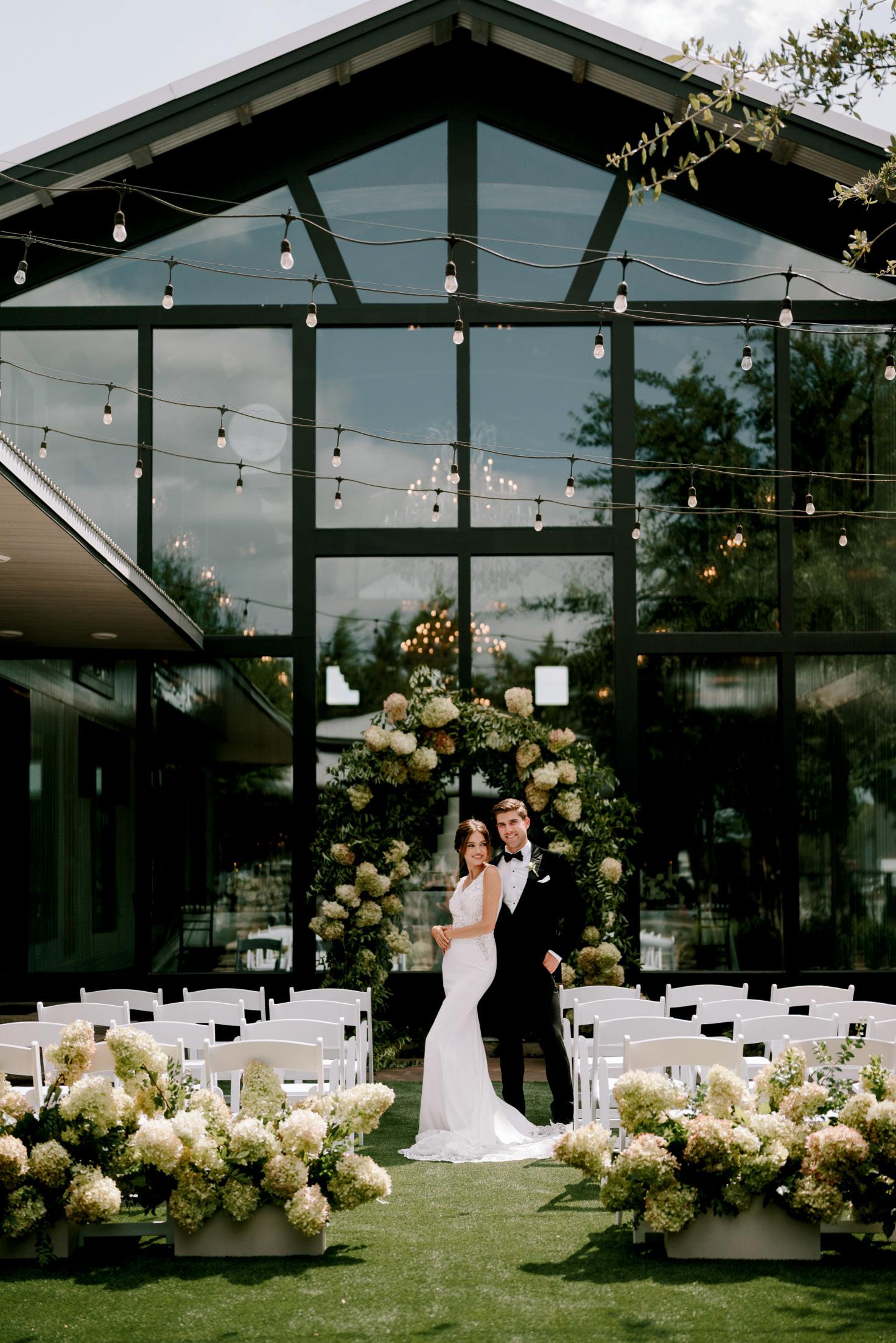

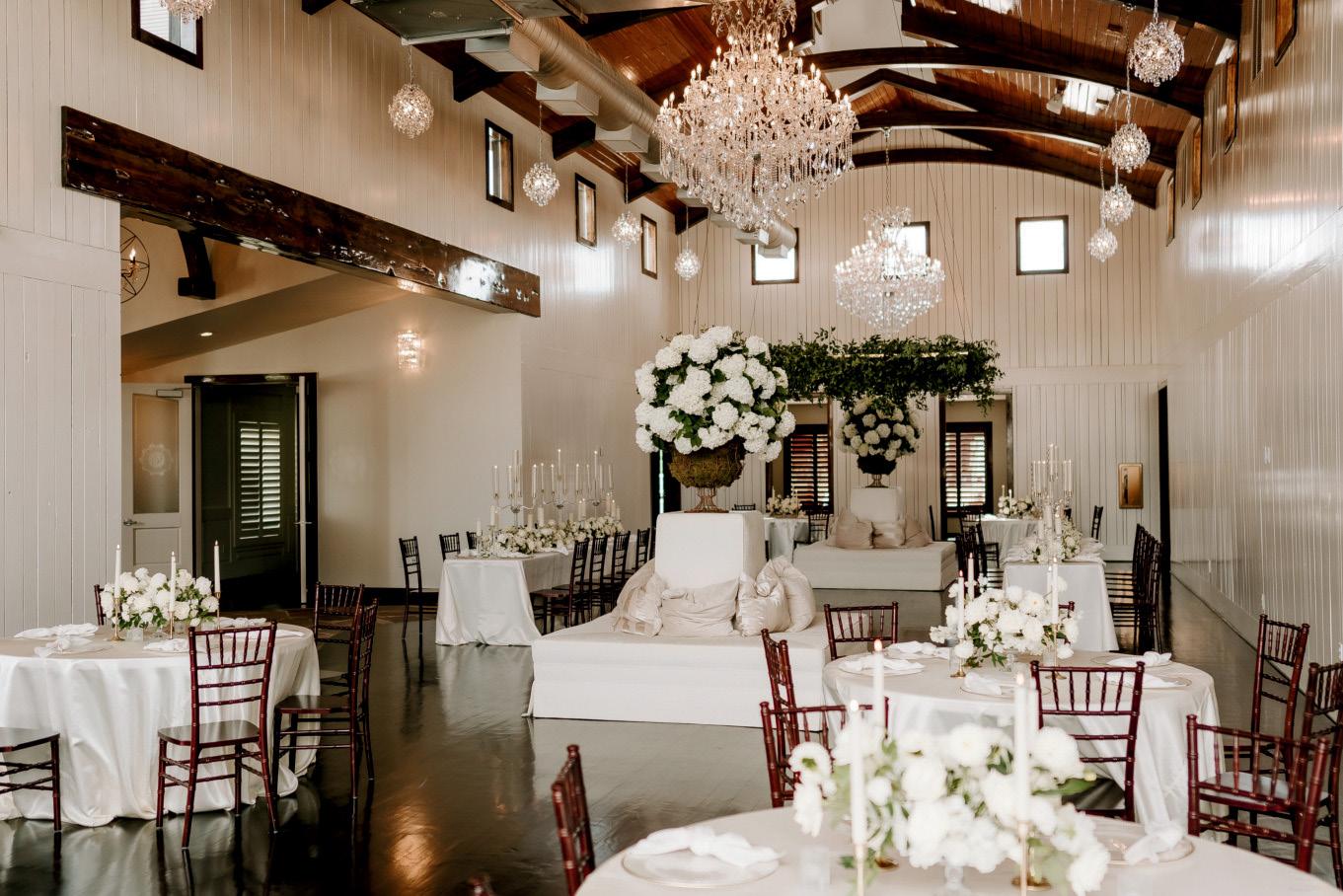





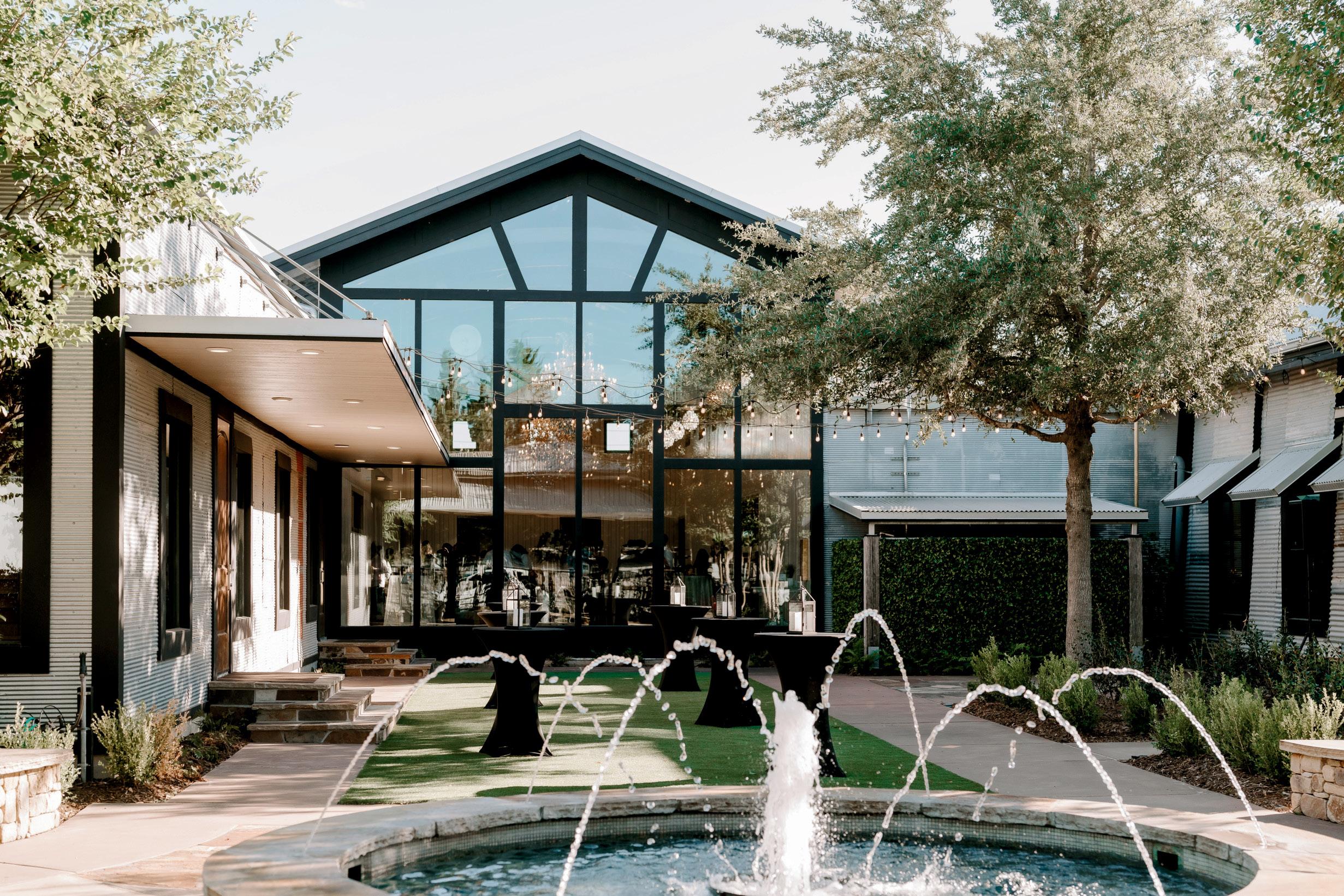




























































Convenient, easy-to-access locations for primary, specialty and emergency care in Katy and West Houston
We offer a full spectrum of care, including:
• Primary care physicians for you and your family, providing personal care and service
• Specialists with innovative treatments and customized programs

• Collaborative teams of experts using the newest technologies and latest research
To find care near you, visit houstonmethodist.org/katy-west or call 713.790.3333
MAGAZINE STAFF
WILLIAM PRIOR
Publisher
KATIE MECHAM
Art Director
RHONDA KUYKENDALL Staff Photographer
DANIEL MCJUNKIN
Publisher Emeritas & Co-Founder
CONTRIBUTING WRITERS
APRIL CANIK
AARON GROFF
DON MCCOY
CJ MCDANIEL
DANIEL MCJUNKIN
DOUG PIKE
JACLYN RITTER
SUSAN LOWE-STRICKLAND MAT YELVINGTON
CONTRIBUTING PHOTOGRAPHERS
TRISHIA DOWNING
DANA HUESKE
RHONDA KUYKENDALL
BRUNO MARTINS
RIC MATKOWSKI
BRYCE OLSEN
GLENN CARSTENS PETERS
MICHAEL TREGUBOV
EXPLORE AMERICA, LLC
GEORGE LANE Chariman & CEO EXPLORE MAGAZINE 281-973-0633
© Copyright 2024 - Explore America, LLC All rights reserved. No part of this publication may be reproduced without written permission from the publisher.
Cover Photo:
Fulshear: sevector - stock.adobe.com
Katy: dfikar - stock.adobe.com
Contents Photo: leekris - stock.adobe.com



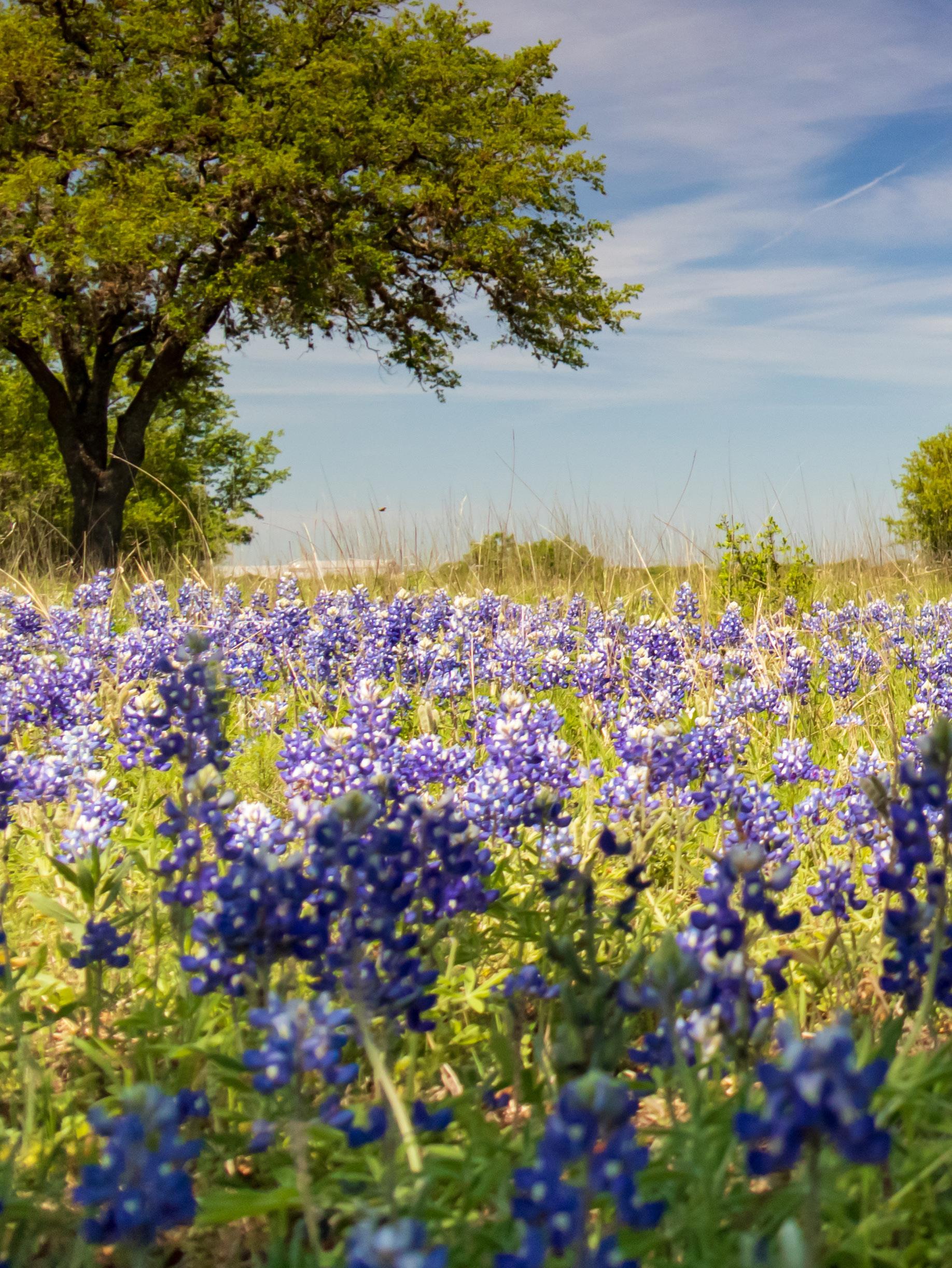


by Nancy
WRITTEN BY EXPLORE TEXAS MAGAZINE
The Soul of a Small Town with the Spirit of Tomorrow
Tucked quietly at the western edge of the Houston metropolitan sprawl, Fulshear, Texas has evolved from a 19th-century cotton and cattle community into one of the most desirable and fastest-growing small towns in the Lone Star State. With its deep Texas roots, scenic prairie landscapes, and a master-planned future, Fulshear is no longer just a charming dot on the map—it’s a destination for families, entrepreneurs, and history enthusiasts alike.
A place where past and present seamlessly converge, Fulshear offers an unmatched blend of historic character and modern livability. Whether you’re drawn by the rolling countryside, the thriving arts and culinary scene, or the allure of top-ranked schools and safe neighborhoods, Fulshear has something for everyone.
The story of Fulshear begins in 1824, when Churchill Fulshear Jr., one of Stephen F. Austin’s original “Old Three Hundred” settlers, received a land grant in the Brazos River region. Born to a wealthy plantation family, Churchill saw potential in the fertile lands of what was then Mexican Texas. He built a plantation home, engaged in cattle ranching and cotton farming, and constructed one of the area’s earliest grist mills.
But what truly transformed the small farming community into a permanent settlement was the arrival of the San Antonio and Aransas Pass Railroad in 1888. The line cut directly through Fulshear’s land, and Churchill’s descendants granted right-of-way with the agreement that a depot be built bearing the family name. Thus, the town of Fulshear was officially born.
For decades, Fulshear remained a quintessential Texas town: a quiet blend of ranches, general stores, and
friendly handshakes. Even as Houston expanded, Fulshear preserved its independence and rural identity, with a population that remained under 1,000 for most of the 20th century.
Fulshear’s
Fast-forward to the 21st century, and Fulshear is a town reborn. Since the early 2010s, Fulshear has experienced explosive population growth, consistently ranking among Texas’ fastest-growing cities. According to recent estimates, the city’s population has surged past 35,000 residents—an astonishing leap for a town that had fewer than 700 people in 2000.
Fulshear is just 30 miles west of downtown Houston, yet it feels like a world apart. Nestled between Katy and Richmond, and just minutes from the Westpark Tollway and Grand Parkway (TX-99), it offers easy access to the energy corridor and Houston’s business hubs—without the noise and congestion.
At the same time, the city has strategically planned its growth, partnering with developers like Cross Creek Ranch and Jordan Ranch to maintain green space, preserve natural beauty, and build communities with walking trails, lakes, parks, and world-class amenities.
1. A+ EDUCATION OPTIONS
Fulshear families enjoy access to high-performing public schools in both the Lamar Consolidated Independent School District (LCISD) and Katy ISD, two of the most respected districts in the region. New campuses like
Fulshear High School are state-of-the-art, and academic performance remains a top priority in this family-focused community.
Developments such as Cross Creek Ranch, Fulbrook on Fulshear Creek, and Weston Lakes offer a variety of home styles—from cozy townhomes to luxury custom estates. These communities are rich in amenities, with resort-style pools, fitness centers, nature trails, lakes, and community events designed to foster neighborly bonds.
The historic downtown district of Fulshear has preserved its small-town charm with locally owned shops, wine bars, coffee houses, and eateries that blend old Texas warmth with modern flair. Favorites like Pier 36 Seafood & Oyster Bar, Essence House Café, and Dozier’s BBQ have become staples for locals and visitors alike.
Fulshear consistently ranks as one of the safest cities in Texas, with low crime rates and a proactive police department. The community is also defined by its open skies and natural beauty—rolling fields, quiet creeks, and sunset views that remind you why people fall in love with Texas in the first place.
Despite the rapid growth, Fulshear has stayed true to its roots. The historic downtown still features original buildings from the early 1900s, and the city proudly preserves landmarks like the Fulshear Cemetery, where members of the founding family rest.
The city’s commitment to history is celebrated annually during the Fulshear Freedom Fest, Scarecrow Festival, and Christmas Tree Lighting, which bring residents together in joyful remembrance of community traditions. These events are more than entertainment—they’re expressions of Fulshear’s enduring spirit.
Quality of Life is more than a buzzword in Fulshear— it’s a way of life. The city is known for its low taxes, low crime, excellent schools, and a tight-knit community atmosphere that’s hard to find in more urbanized areas.
Unlike many fast-growing suburbs, Fulshear has deliberately maintained a rural-urban balance, protecting thousands of acres of natural land, wetlands, and wildlife habitats. Families can enjoy hiking, biking, kayaking, and birdwatching just minutes from their doorstep.
For remote workers or professionals seeking a peaceful home base, Fulshear provides the perfect environment— modern broadband access meets small-town tranquility You can take a conference call on your patio while deer graze in the nearby field.
Fulshear’s future is bright, not only in terms of population but also in economic opportunity. The city has become an attractive destination for businesses, particularly in the construction, retail, healthcare, and real estate sectors. Plans are in place for a growing commercial corridor along FM 1093, including shopping centers, coworking spaces, and tech-enabled services.
City leaders and planners have emphasized responsible development, ensuring that infrastructure, transportation, and utilities scale in tandem with growth. The city is investing in expanded roads, drainage systems, and parks to ensure long-term sustainability.
Spend a weekend in Fulshear and you’ll find that the community spirit is as big as Texas itself. Whether it’s the volunteer fire department hosting a pancake breakfast, students raising funds for local charities, or neighbors gathering for Friday night football, the people of Fulshear are what make the town truly special.
Take Donna, a retired teacher who moved from Houston to be closer to her grandchildren. “I love that I can walk to the farmer’s market, wave to my neighbors, and still get to the theater in the city if I want,” she says. “Fulshear gave me a second chance at life the way it’s meant to be lived.”
Or meet Elias and Maria, small business owners who opened a wine shop and tasting room downtown. “We came here because we wanted to be part of something growing—but not something that had lost its soul,” Elias explains. “Fulshear welcomed us with open arms.”
What sets Fulshear apart isn’t just its location, history, or even amenities—it’s the sense of purposeful living. This is a city that honors its past without being stuck in it. A city that builds for the future, but never at the expense of its character.
From the oak-lined streets of downtown to the masterplanned enclaves of tomorrow, Fulshear remains a testament to what can happen when vision meets values. It’s a place where newcomers feel like neighbors, where business meets community, and where nature meets nurture.
So whether you’re planning a move, launching a business, raising a family, or simply escaping the rush of urban life, Fulshear offers the kind of authenticity, opportunity, and livability that few places can match
With its vibrant past and visionary future, Fulshear, Texas, isn’t just a place to visit—it’s a place to belong.
about Fulshear:
• POPULATION (2025 EST.): 35,000+
• LOCATION: Fort Bend County, ~30 miles west of Houston
• SCHOOL DISTRICTS: Lamar CISD, Katy ISD
• MAJOR COMMUNITIES: Cross Creek Ranch, Jordan Ranch, Weston Lakes
• HISTORIC LANDMARK: Fulshear Railroad Depot (1888)
• ANNUAL EVENTS: Freedom Fest, Scarecrow Festival, Tree Lighting Ceremony
• NEARBY NATURE: Brazos River, Flewellen Creek Park, Polishing Pond Trail
Learn more at: www.fulsheartexas.gov or stop by the Fulshear Welcome Center to explore homes, local businesses, and upcoming events.
FULSHEAR ISN’T JUST PART OF TEXAS HISTORYIT’S SHAPING ITS FUTURE. COME SEE WHY THIS SMALL TOWN IS ONE OF THE BIGGEST SUCCESS STORIES IN THE LONE STAR STATE.




WRITTEN BY MAT YELVINGTON MANAGING DIRECTOR - FULSHEAR FAST TRACK
INthe annals of Fulshear’s history lies a narrative of boldness and foresight—a tale that begins with the thundering arrival of the railroad in the late 1800s. While neighboring towns hesitated, Fulshear seized the opportunity with a pioneering spirit that set it on a trajectory of growth and prosperity. This pivotal decision marked the birth of a community defined by its willingness to embrace change and innovation.
Fast forward to the present day, where that same spirit of innovation continues to thrive in Fulshear, now embodied in the new Fulshear Fast Track | Entrepreneur and Business Hub—an initiative funded by Fulshear Economic Development Corporation, in partnership with The Cannon Community. This collaboration further solidifies Fulshear’s commitment to fostering innovation and entrepreneurship within the community.
Fulshear Fast Track is a manifestation of Fulshear’s commitment to fostering
entrepreneurship and driving economic growth. It’s a testament to the town’s belief in the power of collaboration and collective action to shape a brighter future for all.
At Fulshear Fast Track, we believe in the potential of every individual to make a difference. Whether you’re a budding entrepreneur with a game-changing idea or a seasoned business owner looking to expand your horizons, our hub offers a wealth of resources and support to help you succeed. From mentorship programs to networking events, we’re dedicated to providing the guidance and opportunities you need to thrive.
Within our ecosystem, you’ll discover a dynamic community of trailblazers, each driven by a relentless pursuit of excellence. From tech startups to mom-and-pop shops, our community spans the spectrum of industry, united by a common goal: to push the boundaries of what’s possible.
Our online platform connects you with a diverse array of stakeholders, from fellow entrepreneurs to seasoned investors, all united by a shared passion for innovation. Whether you’re seeking mentorship, collaboration, or investment opportunities, you’ll find a wealth of resources at your fingertips.
Join us at Fulshear Fast Track | Entrepreneur and Business Hub, and together, let’s unlock the boundless potential of Fulshear’s business community. Together, we’ll write the next chapter in Fulshear’s legacy of innovation, one success story at a time.
Take the first step on this journey with us today at fulshearfasttrack.com, and let’s embark on this exciting adventure together.



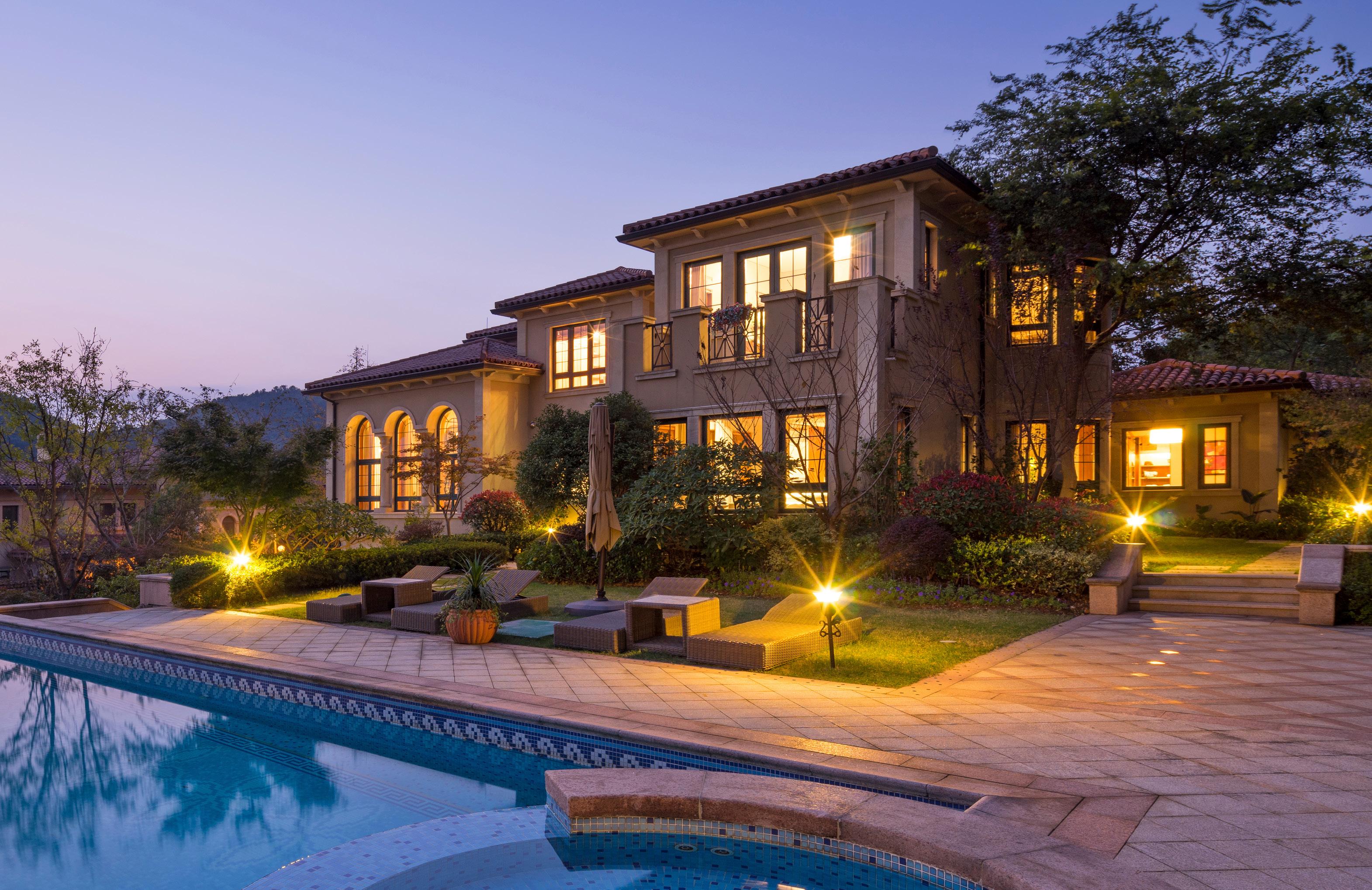


Stewart Title Fulshear is conveniently located at Fulshear Town Center in historic downtown Fulshear. We are right off Main street behind the restaurants and shops. The community, established in 1890, is a special place where small town charm and pageantry meets magnificent 21st century customer service from our team of skilled escrow professionals serving this booming area of Fort Bend County. No matter if you are buying or selling properties, we stand ready to bring over 100 years of Stewart experience to help you protect your finest investments. Stop by our office today and experience the Stewart Title difference.


The City of Fulshear has long been viewed as a place of opportunity by its residents. The vision that began in 1824 with Churchill Fulshear Sr. remains alive today as residents from diverse backgrounds and cultures continue to be attracted to Fulshear.
IN THE LAST DECADE, FULSHEAR GREW FROM JUST BARELY 1,000 RESIDENTS IN 2010 TO AN ESTIMATED 33,000 IN 2023 AND THERE ARE NO SIGNS OF SLOWING DOWN.
Our newest residents are drawn to the highly ranked Lamar CISD and Katy ISD as well as the beautiful masterplanned communities that offer a range of housing
options, amenities, and services for all ages. Fulshear is the fastest-growing city in the Houston metropolitan area and is anticipated to be one of the largest cities in Fort Bend County.
It continues to be a top destination for talent and businesses in the greater Houston region with a highly educated, affluent population. With more than 40% of the population having attained a Bachelor’s Degree. Situated within the strong microeconomies west of Fort Bend County, Fulshear offers easy access to major highways, airports, ports, and railroads making it an ideal location for various businesses.
Zach Goodlander, Assistant City Manager of Fulshear shared his personal experience about what factors motivated him to make Fulshear his home.

“LIKE MANY OTHERS, I’VE CHOSEN TO LIVE IN FULSHEAR BECAUSE I BELIEVE IT COMBINES GREAT MASTER-PLANNED DEVELOPMENTS, WITH CLOSE ENOUGH AMENITIES, ALL WHILE PRESERVING A UNIQUE SENSE OF COMMUNITY. AS MUCH AS WE CAN IT WILL BE IMPORTANT TO PROTECT THE CHARACTER OF FULSHEAR WHILE ALSO CONTINUING TO ATTRACT NEW RESIDENTS AND BUSINESSES THAT ENRICH OUR COMMUNITY.”
As the growth continues the community is quickly adapting to ensure a continued high quality of life desired by the residents. Andrew Van Chau, President of the City of Fulshear Economic Development Corporation said that the goals of the Economic Development board are to meet the retails needs, attract larger employers, and offer residents career options closer to home. Ultimately, diversifying the revenue base of the city to sustain infrastructure and services needed by the community.
“Our City experienced tremendous growth over the last 20 years in great part due to significant investments in infrastructure and prime residential developments, paired with great schools that attracted families from across the Houston Region and beyond. Although it’s been challenging to maintain elements of small-town charm and close connection between neighbors, our residents and organizations like the Fulshear-Katy Area Chamber, Rotary Club, Scouting and many others make Fulshear continue to feel like the special place that it is by hosting community events, pursuing opportunities to help one another and so much more.”
The City recognizes that with growth comes a great responsibility to improve infrastructure in order to ensure the best services and goods for our community. Currently there are various ongoing efforts to make improvements to downtown on Harris Street and Wallis Street. A focus has been placed on detention and drainage improvements to support smaller properties and development in the area. Fulshear is working towards ordinances that bring buildings to the street in order to create a more traditional, walkable downtown.




Former Mayor and Fulshear Development Corporation President Tommy Kuykendall says, “Fulshear began when Churchill Fulshear received a land grant from Stephen F. Austin in 1824 as part of the Old 300 who settled Texas. Fulshear embraced the San Antonio and Aransas Pass Railroad to firmly establish our place as a City along the route. With our explosive growth it is important to remember the history of Fulshear and our early town leaders’ contributions while striving to transform the sea of rooftops into a sustainable mix of parks, trails, retail and commercial centers, and all the support services a community needs to thrive. We have taken great strides to develop plans for the foundation of a great downtown and the time is now to implement those. Local businesses are the backbone of Fulshear’s success. I want to renew our focus on downtown Fulshear and create additional ways we can bring the community together helping build a true sense of place. Fulshear is not just a City, but our home and we all can play a part on telling Fulshear’s story and helping build our sense of place and community.”
FULSHEAR IS A CITY THAT WELCOMES YOU TO JOIN ITS GROWING AND PROSPEROUS COMMUNITY, WHETHER YOU ARE LOOKING FOR A PLACE TO LIVE, WORK, PLAY, OR INVEST, FULSHEAR HAS SOMETHING FOR YOU.
to learn more about the opportunities and benefits of doing business in Fulshear. Email us at ecodev@fulsheartexas.gov or call (281) 346-1796.




by
Just 30 miles west of downtown Houston lies Katy, Texas—a city that defies definition. At first glance, Katy might look like another booming suburb with upscale homes, bustling shopping centers, and traffic humming along the I-10 corridor. But peel back the surface, and you’ll discover something far more enduring: a deeply rooted community with small-town values, a rich and often surprising history, and a future bursting with promise.
Katy is a rare blend—where Texas charm meets global ambition, where century-old rice silos cast their shadows across award-winning schools and high-tech campuses. Once a sleepy farming town surrounded by rice fields and prairie, Katy is now one of the most desirable places to live, work, and raise a family in all of Texas.
The history of Katy begins in the mid-1800s, when pioneers settled in the wide-open prairie that stretched west of Houston. Known for its rich soil and flat terrain, the area proved ideal for agriculture, particularly rice farming, which would become the town’s economic backbone for nearly a century.
The town got its name from the M-K-T Railroad (MissouriKansas-Texas Railroad), affectionately referred to as “The Katy.” When the railroad laid tracks through the area in the 1890s, a depot and post office followed— and the city of Katy was born.
Early settlers endured floods, harsh weather, and isolation, but they built a strong and self-sufficient community. By the early 1900s, Katy was home to rice mills, churches, a schoolhouse, and family-owned businesses that served the needs of hardworking farmers. Though the city officially incorporated in 1945, its identity as a tight-knit town was forged long before then.
Rice was everything in early Katy. The crop thrived thanks to abundant water from Buffalo Bayou and the flat terrain that allowed for vast irrigation. Families like the Stockdicks and Fussells, pioneers of the industry, turned Katy into one of the top rice-producing areas in the United States.
The town’s growth was modest but steady. Schools, a volunteer fire department, and community organizations all sprung up as families moved in search of opportunity. The iconic Katy Rice Festival, held annually since the 1980s, is a tribute to this legacy. What began as a smalltown celebration of harvest has grown into a massive regional event that draws thousands each October— with parades, live music, art vendors, and food stalls filling the historic downtown.
Today, you can still see remnants of Katy’s agricultural past in places like the MKT Railroad Museum, the preserved rice dryers, and even in the city’s logo—a sheaf of rice held proudly at its center.
The true transformation of Katy began in the late 20th century. As Houston expanded westward and companies sought access to skilled workers, quality schools, and affordable land, Katy became a magnet for families and businesses alike
The construction of Interstate 10 (Katy Freeway) and later, the Grand Parkway (SH-99), connected Katy to the rest of the Houston metro and made it accessible for commuters. Meanwhile, Katy ISD emerged as one of the top-ranked public school districts in Texas, drawing families from across the state and even the country.
In the 2000s, Katy blossomed into a full-fledged economic and residential powerhouse. Massive master-planned communities like Cinco Ranch, Seven Meadows, Firethorne, and Cane Island began to rise from former prairie lands. Shopping and dining exploded with the arrival of LaCenterra at Cinco Ranch, Katy Mills Mall, and a host of local gems that celebrate both international cuisine and Southern comfort.
One of the Best Places to Live in Texas
1. TOP-RANKED EDUCATION
Katy ISD is a major draw for families. With over 90 campuses, including several National Blue Ribbon Schools, the district is known for academic excellence, sports achievements, and student enrichment. Schools like Tompkins High School, Seven Lakes High School, and Cinco Ranch Junior High consistently rank among the best in the state.
2. MASTER-PLANNED LIVING
Katy is a showcase of master-planned living. Neighborhoods like Cinco Ranch offer everything from top-notch schools and pools to greenbelts, lakes, and golf courses—all within walking distance. The new Cane Island community brings resort-style amenities and highend architecture to the historic core of Katy.
3. SMALL-TOWN FEEL, BIG-CITY PERKS
Even as the population surpasses 350,000 in the broader Katy area, the city retains a community-first feel Neighbors know each other. Local businesses sponsor little league teams. And events like Katy Market Day, Veterans Day celebrations, and the Katy Heritage Society’s events keep the town rooted in tradition.
4. STRONG LOCAL ECONOMY
Katy’s job market is booming, thanks in part to the Energy Corridor, West Houston Medical Center, and a growing base of tech, logistics, and professional services. Global companies like Amazon, BP, Igloo, and Schlumberger have established operations nearby, offering employment and economic stability.
5. NATURE AND RECREATION
With over 50 parks and recreational facilities, Katy is a paradise for outdoor lovers. Explore the scenic Mary Jo Peckham Park, fish at Bass Park, or hike the trails at Willow Fork Drainage District’s Exploration Park. The city also has multiple golf courses, tennis centers, and community pools that promote an active lifestyle.
One thing new residents often ask is: What’s the difference between “Katy” and “Greater Katy”?
The City of Katy refers to the incorporated municipality, which includes the original townsite and surrounding neighborhoods. It has its own mayor, city council, and services such as police, utilities, and public works.
The Greater Katy Area, however, extends across parts of Harris, Fort Bend, and Waller Counties, encompassing unincorporated areas managed by the counties. These areas rely on county services and often fall within one of the many Municipal Utility Districts (MUDs). Despite the administrative differences, residents across the region all identify as part of the Katy community, united by shared schools, shopping centers, and social events.
Katy’s cultural scene is flourishing. While it lacks the skyscrapers and museums of a major city, it makes up for it with community-driven experiences, charming local eateries, and diverse cultural festivals.
You’ll find everything from authentic Vietnamese pho and Mexican taquerias to Texas BBQ joints and artisan coffee shops. The local brewery, No Label Brewing Co., located in a converted rice silo, has become a weekend destination complete with food trucks and live music.
Downtown Katy, with its antique shops, boutiques, and farmers markets, offers a nostalgic trip back to simpler times. Meanwhile, the Katy Heritage Museum and Railroad Park tell the story of how this little prairie town turned into a powerhouse.
And the community events are second to none—Night of Prayer, July 4th Freedom Festival, Katy Rodeo, and Katy Taste Fest bring residents together year-round.
As Katy continues to grow, city planners and developers are focused on smart growth, infrastructure, and sustainability. There’s a conscious effort to balance development with preservation, ensuring that open spaces, wildlife corridors, and floodplain management are part of the expansion plan.
NEW INITIATIVES INCLUDE:
• KATY BOARDWALK DISTRICT: An ambitious mixeduse development that will include a convention center, nature preserve, residential units, and entertainment venues.
• TECHNOLOGY AND INNOVATION PARKS: Plans for tech corridors and innovation hubs are in development to attract startups and green businesses.
• TRANSIT AND MOBILITY IMPROVEMENTS: Investments in park-and-ride systems, road widening, and bikefriendly infrastructure will make commuting easier.
No article about Katy would be complete without celebrating its people.
There’s David and Tisha, small business owners who started a farm-to-table café in Old Katy. “We wanted to build something our kids could be proud of,” Tisha says. “Katy gave us the space and the support to do just that.”
Or Javier, a second-generation teacher and football coach. “In Katy, sports aren’t just games—they’re life lessons. It’s about grit, heart, and community,” he says.
And then there’s Rita, an 82-year-old volunteer who still helps organize the annual Rice Festival. “I’ve seen Katy change more than anyone could imagine,” she smiles. “But it still feels like home.”
In a world that moves fast and feels increasingly disconnected, Katy offers something rare: a place where modern life still has meaning. It’s a city where families put down roots, where students thrive, where businesses grow, and where the past is not just remembered—it’s cherished.
Whether you’re a young professional, a growing family, a retiree, or a dreamer with big ideas, Katy welcomes you with open arms and deep roots.
About Katy, Texas
• FOUNDED: 1895 (Incorporated 1945)
• POPULATION (2025 est.): 350,000+ in the Greater Katy area
• COUNTY: Harris, Fort Bend, and Waller
• SCHOOL DISTRICT: Katy Independent School District (Katy ISD)
• MEDIAN HOME PRICE: ~$350,000 (varies by community)
• MAJOR EMPLOYERS: Katy ISD, Amazon, BP, Memorial Hermann, H-E-B
• ANNUAL EVENTS: Katy Rice Festival, Katy Rodeo, Taste Fest, Freedom Fest
• OUTDOOR HIGHLIGHTS: Mary Jo Peckham Park, Exploration Park, Katy Boardwalk
• HISTORIC SITES: MKT Depot, Katy Heritage Park, Katy Veterans Memorial Museum

Whether you’re considering a move or planning a visit, Katy, Texas delivers the best of all worlds: timeless values, modern comforts, and a welcoming community that feels like home the moment you arrive.
Visit www.cityofkaty.com to learn more, or stop by the Katy Area Chamber of Commerce to explore the neighborhoods, businesses, and events that make this one of Texas’ most beloved cities.
SUBURBAN RENAISSANCE, KATY STANDS AS A SHINING EXAMPLE OF WHAT IT MEANS TO GROW WITH PURPOSE AND PRIDE.
KATY, TEXAS IS MORE THAN JUST A PLACEIT’S A WAY OF LIFE.



WEDDING & SMALL EVENTS VENUE




The ultimate open/enclosed wedding venue just west of Houston, Texas! We offer four unique and flexible venues that will transport you to an oasis all your own.
From saying “I do” in our Spanish mission-inspired chapel overlooking the river, to a reception unlike any other in our awe-inspiring Palapa. Your guests will be ushered through the grounds for an unforgettable experience.
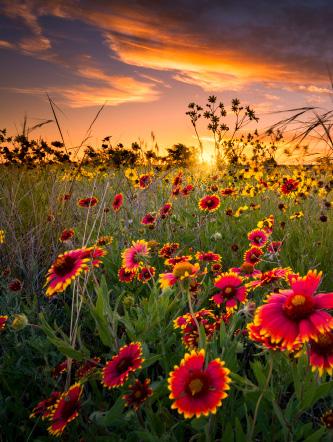
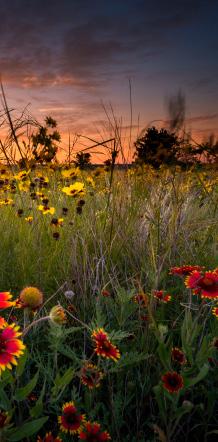
WRITTEN BY EXPLORE TEXAS MAGAZINE
In a state celebrated for its iconic cities and historic landmarks, Richmond, Texas often flies under the radar. But for those in the know, this historic city on the banks of the Brazos River offers an extraordinary blend of oldworld charm, modern convenience, and authentic Texas culture. Located just 30 miles southwest of downtown Houston, Richmond stands proudly as one of the oldest cities in Texas—yet it continues to evolve as a vibrant place to live, raise a family, and experience the soul of the Lone Star State
Unlike many of its fast-growing neighbors, Richmond retains its sense of identity. Here, restored Victorian homes and centuries-old oak trees live in harmony with master-planned communities, thriving businesses, and scenic nature trails. Richmond is a town where people don’t just move—they put down roots.
To understand Richmond today, one must first appreciate its remarkable past. Founded in 1837, Richmond was among the original 19 cities chartered by the Republic of Texas. It became the seat of Fort Bend County, a title it holds to this day.
Richmond’s early days were shaped by war, settlement, and resilience. Stephen F. Austin’s “Old Three Hundred” colonists were granted land in this region, making it one of the earliest Anglo-settled areas in Texas. The town quickly grew into a commercial hub for cattle, cotton, and sugarcane—industries that flourished along the Brazos River, the city’s lifeline.
Its historic role in the Texas Revolution and Civil War is evident in the many landmarks still standing. From the historic Fort Bend County Courthouse, built in 1908, to the Morton Cemetery, resting place of dozens of notable Texans, Richmond is rich with stories of patriotism, perseverance, and pioneering spirit.
Among its most legendary figures is Mirabeau B. Lamar, second president of the Republic of Texas, who called Richmond home. So too did Jane Long, known as the “Mother of Texas,” whose adventurous life is immortalized in local lore and commemorations.
Where the Past Lives On
Today, Downtown Richmond offers visitors a glimpse into the city’s historic soul. Brick-lined sidewalks and original 19th-century buildings house locally owned boutiques, cafes, art galleries, and antique shops. The George Ranch Historical Park, just minutes from downtown, spans over 20,000 acres and takes guests on a journey through four generations of Texas history—from frontier days to the cowboy era.
Cultural landmarks such as the Fort Bend Museum, the restored Moore Home, and the John M. Moore Humanities Building reveal a town that fiercely protects its heritage while welcoming innovation. Live music at local haunts, public art murals, and farmer’s markets bring the community together in ways that honor the past while looking toward the future.
While Richmond’s roots run deep, it’s the livability and lifestyle of today that make it one of the most soughtafter small cities in Southeast Texas.
1. MASTER-PLANNED COMMUNITIES WITH HEART
Richmond is home to some of the region’s most thoughtfully designed communities. Harvest Green, a nationally recognized “agri-hood,” blends sustainable farming with suburban living. Residents grow their own vegetables, enjoy weekly farm stands, and connect over garden-to-table living. Other communities like Veranda, Long Meadow Farms, and Pecan Grove offer residents exceptional amenities, schools, and proximity to both downtown and nature.

While Richmond itself is served by the Lamar Consolidated Independent School District (LCISD), families can also access charter schools and private education options. LCISD is known for its dedication to academic excellence, extracurricular growth, and community engagement—qualities that have made it a preferred choice for young families relocating to the area.
Richmond residents enjoy the best of both worlds. You can stroll the Brazos River trails, catch a high school football game, or attend a local arts festival—and still be 30 minutes away from Houston’s international airport, medical centers, and business districts. For commuters and entrepreneurs alike, this balance is a major draw.
The Brazos River defines Richmond’s landscape, winding its way through the town and offering kayaking, fishing, and scenic views. Nature lovers can explore the Brazos River Park, Jones Creek Ranch Park, and George Park, where miles of trails, ball fields, and picnic areas create space to breathe, move, and enjoy life outdoors.
As Fort Bend County has become one of the fastestgrowing counties in America, Richmond has experienced

a renaissance of development and investment. But unlike many cities swallowed by rapid urbanization, Richmond has made it a priority to preserve its small-town values while fostering innovation
New shopping centers, medical facilities, and corporate campuses are rising, yet Richmond’s leadership continues to prioritize walkable streets, green spaces, and local entrepreneurship. The city’s economic strategy supports a mix of industries including healthcare, logistics, construction, and technology—all while promoting business development within its historic corridors.
Thanks to smart infrastructure planning and a city council dedicated to managed growth, Richmond’s future looks as promising as its past is proud.
Despite its modest size, Richmond boasts a vibrant cultural life. The city supports numerous festivals, live music events, and art showcases throughout the year. Highlights include:
• PECAN HARVEST FESTIVAL – a celebration of Richmond’s agricultural heritage.
• RICHMOND FARMERS MARKET – featuring local artisans, food trucks, and live entertainment.
• HISTORIC RICHMOND ASSOCIATION’S ANNUAL CANDLELIGHT TOUR – a holiday tradition that brings history to life.
The city is also investing in public art, with murals and installations popping up downtown that reflect Richmond’s stories, heroes, and community spirit. Meanwhile, nearby theaters, libraries, and museums ensure that residents don’t need to drive to Houston to get a taste of culture and creativity.
Richmond is the kind of place where people wave from their front porch, where city council meetings are well attended, and where generations of families still live on the same land settled by their ancestors. But it’s also a community open to newcomers—welcoming families, young professionals, retirees, and immigrants with the same Texan warmth.
Take Rosa and Manuel, who opened a local bakery after relocating from El Paso. “We wanted a place with heart,” Rosa says. “Somewhere to raise our children and build something meaningful. Richmond gave us that.”
Or Jenna, a remote worker who moved to the Veranda neighborhood during the pandemic. “I used to dream of working from a porch swing surrounded by trees,” she smiles. “Now that’s my everyday life.”
While nearby Sugar Land and Katy may get more headlines, Richmond’s quiet influence has shaped the Houston area for nearly two centuries. From agriculture to governance, from historical preservation to smart suburban development, Richmond has led by example.
As part of the Houston–The Woodlands–Sugar Land metro area, Richmond benefits from regional growth while retaining autonomy. It’s a rare thing: a city that exists on its own terms while thriving within a much larger ecosystem.
Looking ahead, Richmond is investing in its future without forgetting its past. Key initiatives include:
• DOWNTOWN REVITALIZATION: Preserving historical buildings while modernizing infrastructure and enhancing walkability.
• RIVERFRONT DEVELOPMENT: Expanding recreational access and environmentally conscious development along the Brazos.
• SUSTAINABLE GROWTH: Encouraging green building practices and supporting agricultural innovation through developments like Harvest Green.
City officials and residents alike are focused on making Richmond one of the most livable small cities in Texas, emphasizing quality of life, education, safety, and opportunity.
• FOUNDED: 1837
• COUNTY: Fort Bend (County Seat)
• POPULATION (2025 est.): ~15,000 (City) / ~150,000 (Greater Richmond Area)
• DISTANCE TO HOUSTON: ~30 miles southwest
• SCHOOL DISTRICT: Lamar Consolidated ISD
• MAJOR COMMUNITIES: Veranda, Harvest Green, Pecan Grove, Long Meadow Farms
• TOP ATTRACTIONS: George Ranch Historical Park, Fort Bend Museum, Brazos River Park
• ANNUAL EVENTS: Pecan Harvest Festival, Candlelight Tour, Art Walk
• MEDIAN HOME PRICE: ~$320,000
• FUN FACT: Home to one of the oldest continuously operating cemeteries in Texas—Morton Cemetery, established in 1825
Whether you’re visiting for the weekend or planting permanent roots, Richmond offers something few places can: a living history wrapped in Southern hospitality, layered with modern comfort and future potential.
It’s not just a city—it’s a narrative of Texas itself, written in weathered stone, riverbank breezes, family traditions, and entrepreneurial dreams.
So come walk the tree-lined streets, sip sweet tea on a wraparound porch, catch a sunset over the Brazos, and discover why Richmond, Texas is one of the most beloved and livable towns in the Lone Star State.
IN RICHMOND, HISTORY ISN’T A CHAPTER - IT’S THE SOUL. AND THE FUTURE? IT’S YOURS TO HELP WRITE.


by


WRITTEN BY APRIL CANIK
RE/MAX Realtor® Gayle Bowen remembers when the population in Fulshear, TX crossed the 600 mark. Now that 6.2k folks call Fulshear ‘home,’ she feels a sense of pride knowing that The Gayle Bowen Team has played a role in that impressive growth and success.
“With new schools and grocery stores, expanded highways, oversized lots and excellent upscale culinary additions,” says Gayle, “Fulshear pretty much sells itself.” Families also flock to Fulshear for the small town charm that few other communities can match.
Those amenities add up to a dream come true for buyers, sellers -- and realtors alike. A third generation Houstonian, Gayle joined RE/MAX in 1988 and consistently enjoys recognition in the RE/MAX Hall of Fame as a Top Producer. Recently, the team landed on the 2023 Texas Top 500 list. “The Gayle Bowen Team has been finding and selling homes for so many decades that our longtime clients are sending the next generation our way,” she adds.
Speaking of next generation, Gayle’s daughter Stephanie Bowen Sykes is now one of the powerhouse team members propelling them to the top. “Since her dad and I were both in real estate,” shares Gayle, “Stephanie seemed to be destined to do this for a living. She went to our open houses, listings and meetings in her baby carrier, and spent countless hours in my real estate office over the years. She jokes with people by saying that she grew up either at a closing table or inside an attic with her father!” Stephanie initially opted for a teaching degree from Texas State, and followed that path for the first eight years of her adult career. After becoming a mother, she was reintroduced into real estate after becoming co-owner of a construction company with her husband, and the rest is history. In fact, this adds value via an additional layer of service to The Gayle Bowen Team.
When Stephanie isn’t busy helping her clients all around town, she spends much of her time scoping out and purchasing properties to renovate and build with their company, White Oak Homes. She shares, “I love being a part of the whole building process!
From picking out the lot, perfecting the plans, making design decisions, all the way to the finished product— it truly is my dream job!”
The Gayle Bowen Team can work with anyone, anywhere, but have specialized in four of the most popular regions: Katy, Fulshear, Memorial, and the Heights. “This doesn’t mean that we don’t spend our days driving to Conroe, Sugar Land, Friendswood, Magnolia, and other great suburbs around Houston— because we truly do it all!” states Stephanie.
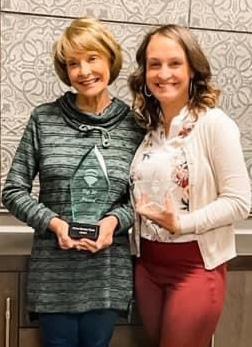
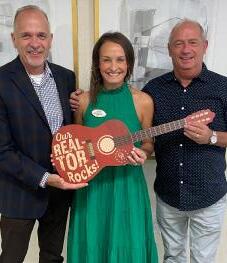




• Go the extra mile
Special requests are an important part of the job, whether that be finding a home with a room and bathing area for the family dog. Maybe you’re looking for extra acreage for equestrian use— whatever you’re searching for, the team can make it happen.
• Have a great team
In addition to three successful realtors, the team includes Kristin Cady, who has managed the office and generated excellent marketing initiatives for decades.
• Give back
The Gayle Bowen Team has long supported the Coastal Conservation Association, The Graeme McDaniel Foundation, Children’s Miracle Network and serves as a cheerleader for the Fulshear Farmer’s Market, among other amenities in each flagship communities.
• Stay involved
“Our team has a strong presence in local schools, Chambers, parades and other activities as time allows. We also stay in touch with all of our clients over the years, and often help them sell properties we helped them buy decades before,” adds Gayle.
• Be honest
“We value relationships much more than profits,” says Gayle, “I will advise people to wait if I think there is too much volatility in the market, for example. We consider each interaction much more than a financial transaction.”
Lifelong relationships are the cornerstone for The Gayle Bowen Team success. Phyllis Chaney echoes that sentiment, sharing, “I was introduced to Gayle Bowen over two decades ago while purchasing our ranch. She was the buyer’s representative, but made the transaction so pleasant for both parties. Now after all these years, because of her knowledge, professionalism and kindness, we have reached out to her to represent us in the sale of our ranch when we decide to downsize.” Adds Phyllis, “Gayle is a wonderful human being, professional and has the experience to handle any real estate transaction, large or small. I could not imagine having any other Broker represent us in any real estate transaction.”
Being a stickler for details and consistent follow through has been a winning strategy for Gayle and her RE/MAX Superstars. “It is hard to believe I was there from the beginning when the community of Remington Trails first opened and was built out, and then being a part of Fulbrook, which is now fully developed! All three of us are still very involved in these areas, and are excited to take on current and new adventures.”


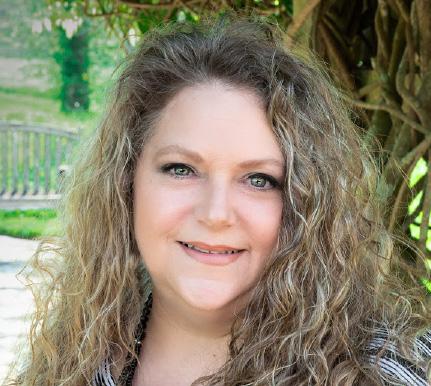




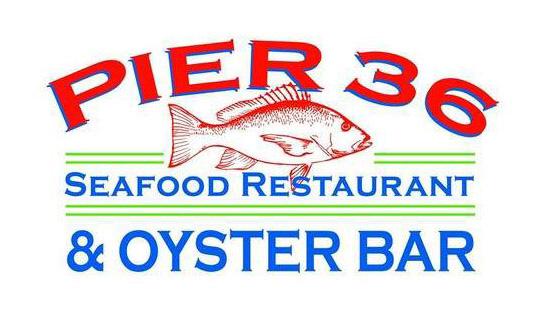
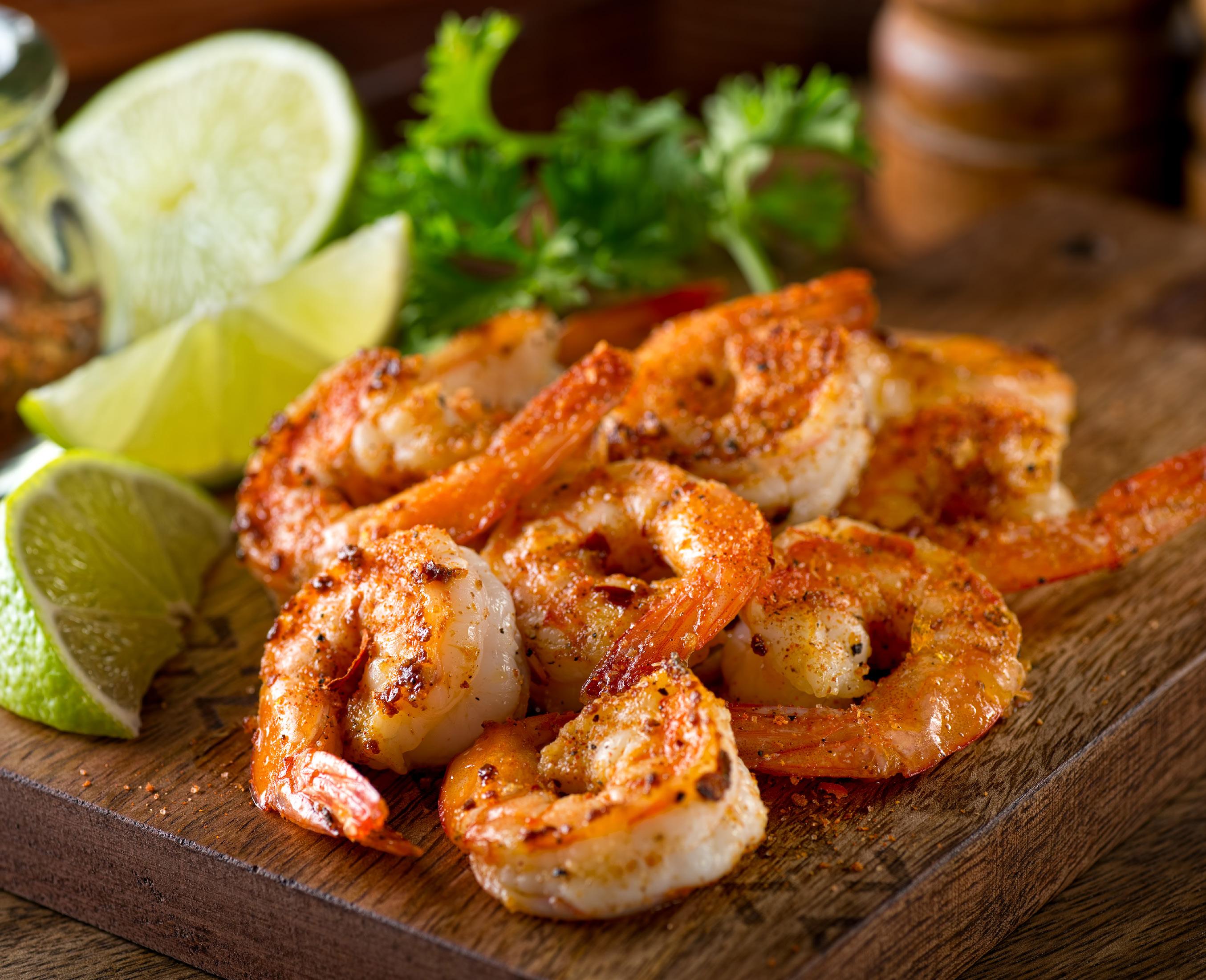
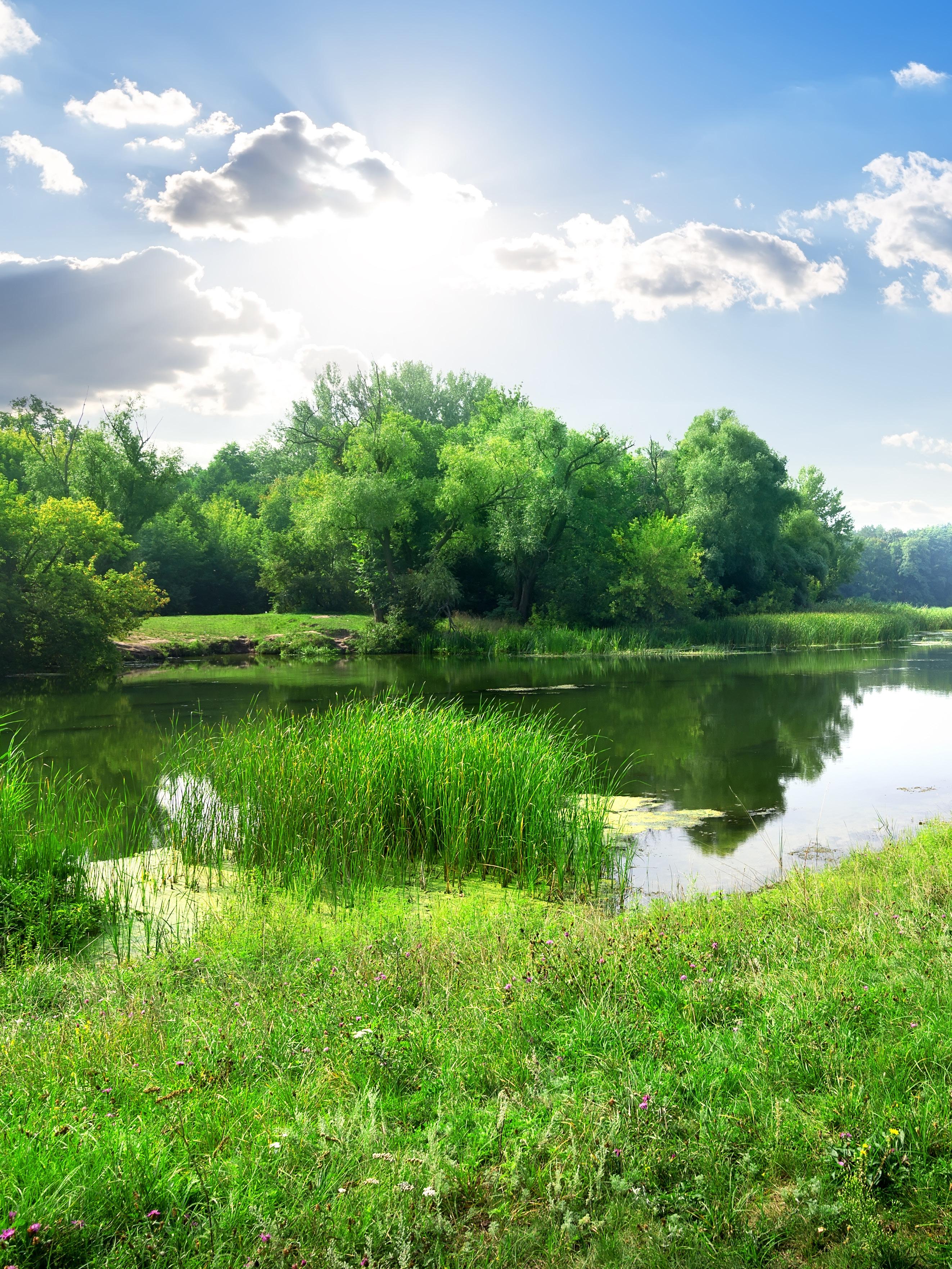


WRITTEN BY CJ McDANIEL
When the first European explorers crossed the middle of the North American continent they found awesome expanses of grasslands. There were no words to really describe the scenery. The French, who typically were known for a dismissive phrase, described it as a meadow. Englishmen with a better grasp of what we know as English seemed to be inspired and called it a “prairie.” Sometime later one of the early settlers wrote in 1841, that “for miles the prairie gently sloped, hardly presenting a bush to relieve the eye. In the distance, the green skirting of woods, which fringed either border of a large stream, softened down the view. Occasionally a deer would jump suddenly from his noonday rest, and scamper off...”
At this same time, native Americans were living off the land. They hunted the vast herds of bison, pronghorn antelope, deer and elk that roamed the prairies. They wasted little of what they took using the hides for their clothing and shelter and supplemented their diets with native plants found on the prairie. There were some tribes who even built homes using the abundant prairie grasses.
Before 1850 the great mid-continental grasslands stretched from southern Wisconsin to western Montana, from central Texas to Canada. Grasslands have existed in one form or another for millions of years. There is even fossil evidence indicating that most plants of the modern prairie were present during the Pleistocene era, about a million years ago.
More species of animals can be found in Texas than any other. With our relatively unique geographic position, we have a great diversity of not just animals, but also plants. Described as being at the crossroads of the eastern deciduous forest, the coastal plain, the grasslands, and the Sonoran desert.
There are over 5,000 plant species found within Texas, and over 500 species of grasses.
It did not take long for Texas and the prairie as it was to begin to change. Man’s belief in his dominion over the earth now began to change the character of the land. These first residents of the Texas Blackland Prairie were not farmers; the thick sod and heavy, doughy black clay soils were almost impossible to cultivate with the wooden board plow in use at the time. So those who wanted to take up farming when the Spanish first opened Texas to colonization in the early 1800’s settled in the southeastern part of the state near the Gulf Coast, where the soils were more amenable to cultivation with these wooden implements.
Early land grants in the Blacklands were mostly taken by cattlemen, where the tall grasses were “high enough to hide cattle and long enough to tie in a knot around a horse’s back.” These tall grasses made excellent forage. Cattle grazing differed from that of the buffalo herds. Domestic livestock was the first major disruption of the prairie grasslands. Bison, which the Native Americans called buffalo, grazed the land intensively. But they roamed giving the grasses time to recover. With early cattlemen there was concentrated grazing in smaller areas over longer periods of time. The natural species
competition and succession of the native grasses was disturbed, favoring weedy annuals that were the shorter, more grazing-tolerant species of grass and species unpalatable to cattle.
By 1900 most of the Blackland Prairie was under cultivation and was recognized as one of the foremost cotton producing regions of the world. Ellis County in Texas was at the center of this extraordinary accomplishment, and many grand old Victorian homes in the cities of Waxahachie and Ennis still exist today, as reminders of the fortunes that were made in those times.
Cultivation was also, however, a catastrophic disruption of the prairie ecosystem. It was a common farmers’ joke to tell the story of an old Indian who, having seen a plowed field for the first time, said to the farmer, “Wrong side up.” The story was taken to be an illustration of the Indian’s ignorance, but in fact when the native grasses are turned under and the soil aerated, the organic matter decomposes faster. This creates a flush of nutrients available to cultivated crops, but when the crops are harvested the nutrients are removed with the harvest, and the soil continues to be depleted year after year. Today’s dependence on chemical fertilizers is evidence that perhaps there was more wisdom in that old Indian’s statement than was recognized at the time.
In the early days of cultivation of the Blackland Prairie, mules were the source of power. Farms maintained a hay meadow where the native grasses were cut for hay or used for pasture. At one time these prairies covered more than 32 million acres in Texas alone. However, with the advent of tractors most of these meadows and pastures have been plowed under.
During this period, natural fires kept woody species to a minimum as well as keeping the ground clear of dead vegetation enabling the tall grasses to thrive and providing additional opportunity for the growth of additional grass species and forbs to be established. But local farmers and cattlemen were petrified of the fires and eliminated them almost completely….and as a result, the rapid invasion of woody plants ensued. Most prairie homes had only dirt yards due to this fear of fire.

by Bryce Olsen
Before the European settlers arrived, the moist eastern prairies of Texas were dominated by the tall grasses such as big bluestem, Indian grass, little bluestem, eastern gamagrass and switch grass. And in the western regions, the shorter grasses such as buffalograss, blue grama and common curly mesquite were dominant due to the drier nature of that area. And in between, mid-grasses such as sideoats grama, little bluestem, silver bluestem and Texas cupgrass were abundant. Running through these belts of grasslands were the Post Oak Belt to the East, and the East and West Cross Timbers to the west of the Blackland Prairie. Throughout the Blacklands, as well, could be found rivers, streams, and bottomland hardwoods.
Today, more than 90% of the area of the main belt of the Blackland Prairie of Texas has been lost.
Much of this land has been planted in exotic pasture species such as African Bermuda grass and lovegrass, Eurasian “King Ranch bluestem,” and Mediterranean Johnson grass.
These native grasslands, including the many forbs and wildflowers provided a perfect habitat for a myriad of animal and birdlife. These upland areas were unique, offering turkey, quail, dove, pheasant, chachalaca and numerous other species. In addition, there were many migratory birds that traveled across Texas like pintail and mallard duck, geese coot and sand hill crane, many to get to the gulf for warmer climes during the winter months.
By the 1950s extensive brush control and eradication was in full operation in Texas. By the late 1960s wildlife managers became concerned about the effect of brush control on habitat and wildlife. These prairie preserves not only provided great habitat for birds, but for other native species including deer. The history of south Texas from early Spanish exploration, through settlement and colonization, into the present shows us that managing the habitat and its resources is the most important and critical aspect of maintaining quality wildlife populations.
Do you remember the good ole days? Where have all the quail gone? Remember when you could flush 30 coveys in a day with a good dog? Now it seems the prairies are being covered by concrete. Do you remember when you could hear bobwhites whistling in the spring? Two men back in the early 2000’s asked these same questions. And from that small quandary was born an organization dedicated to restoring native prairies to protect and restore native habitat for not just the quail, but for all native species.
In 2000, Jim Willis and John Webb purchased a 225-acre ranch in Colorado County, Texas. The property was primarily coastal prairie that was severely overgrazed and lacking in wildlife. They developed a wildlife habitat restoration plan, obtained an open space tax valuation, and with the help of USDA Natural Resources Conservation Service, Texas Parks and Wildlife



In 2004, Willis and Webb became co-founders of the Wildlife Habitat Federation, now WHF to encourage others to emulate their success by providing a source of assistance and guidance to other landowners in the local area. WHF began working in 2 counties on 200 acres of ranchland. In 2005, WW Ranch was recognized by the Texas Parks and Wildlife Department as the Lone Star Steward Award recipient for the Gulf Coast Prairies and Marshes Ecoregion.
In 2006, desiring to expand the native prairie footprint in the area, WHF applied for and was the first Texas recipient to be awarded a Conservation Innovation Grant from the U.S. Department of Agriculture’s National Resources Conservation Service. The grant provided funding to increase quail habitat along a 7-mile-long corridor starting at the Attwater Prairie Chicken National Wildlife Refuge in Eagle Lake and ending at WW Ranch in Cat Spring. Portions of the 150-foot-wide corridor were “set apart” with fencing that ran parallel to existing boundary fences and crossed 5 ranches. Using various restoration practices such as prescribed burning, herbicide applications and no-till planting, the land lying within the boundaries of the corridor was returned to a historical native grass and forb plant community. The corridor was completed in 2010.
In 2013, TPWD’s Oaks and Prairies Joint Venture began annual bird counts in a focal area that included the WHF Quail Corridor. They found 31 species of birds and a population increase of 80% more birds living in the corridor area than in the surrounding landscape. In 2014, 30 Attwater Prairie Chickens were seen in the corridor off of the refuge. The success of this program demonstrates that agriculture and wildlife habitat can co-exist. To quote Aldo Leopold in his book, A Sand County Almanac, “Can we really not have ‘both progress and plants?”
2016 saw the addition of a Program Director, Garry Stephens, who joined WHF after 30 years’ service with the USDA-Natural Resources Conservation Service.

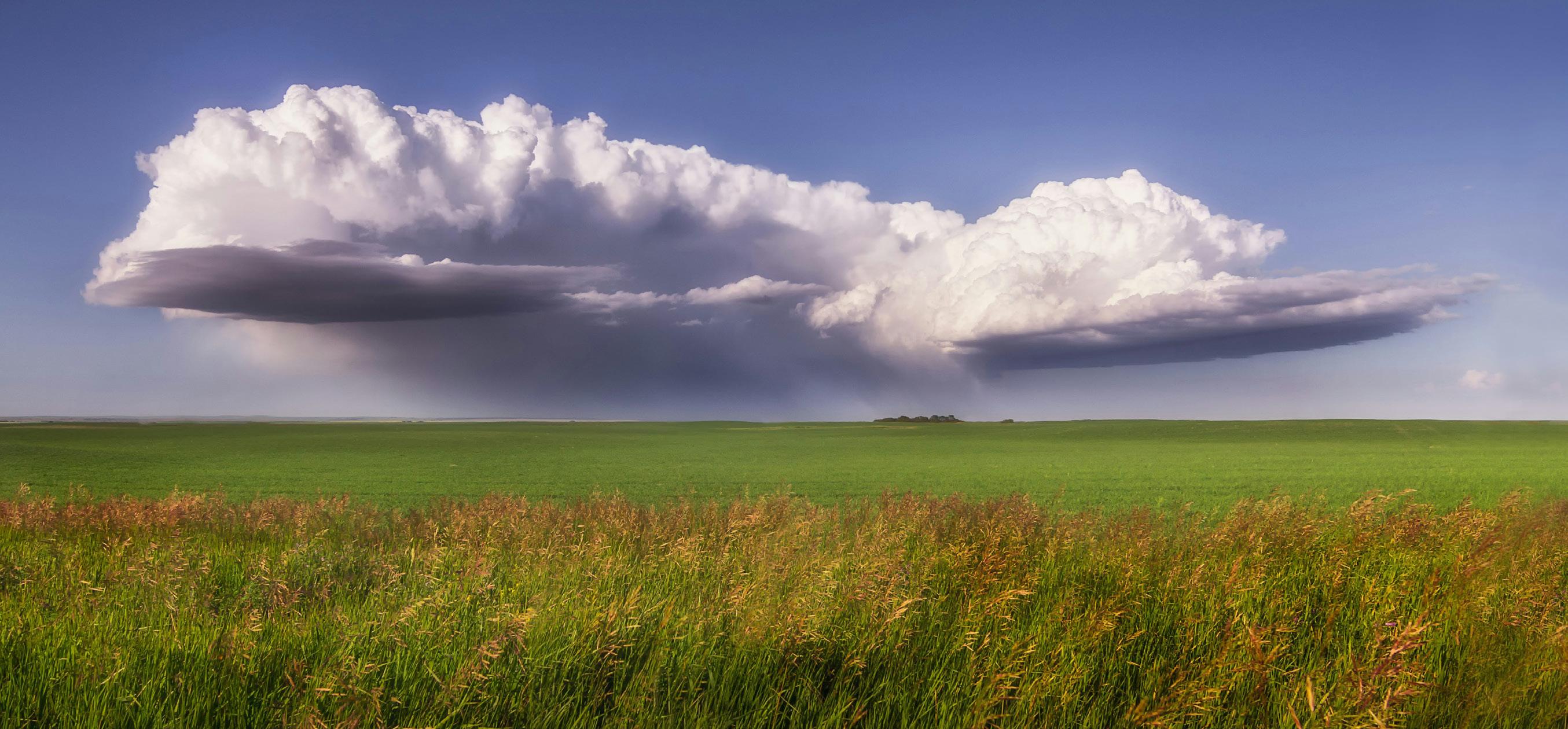



After years of diligently putting habitat on the ground, WHF has increased its area of impact to more than 50 Texas Counties and is seeing positive results with improved habitat management on over 115,000 acres of farm and ranchland.
Urban projects have included the Katy High School Tiger Prairie, the Memorial Park Landbridge Project, Hermann Park, M.D. Anderson campuses, the Fulshear FM 1093 Median wildflower project and the Texas Heritage Parkway. After nearly 20 years, now with a strong board of trustees and driven by the desire to restore Texas habitats, the organization has rebranded to become WHF Texas and has been successful in helping ranchers and farmers throughout the state to better understand how protecting native grasses can not only give them better grazing results on their land, but improve soil conditions, provide new habitat for native species and even assist in carbon sequestration.
WHF has a staff of seven experienced field personnel who have many years of hands-on experience in the development of habitat management plans. Touching over 115,000 acres of Texas farm and ranchland, these professionals have been making tremendous progress with individual landowners in creating highly friable soils...rich, crumbly texture that is ideal for root systems to grow deep and widespread. Friable soil also allows for better water absorption, decreasing run-off. Secondly, whether these landowners are seeking to improve aesthetics and welcome pollinators or improve livestock grazing, our professionals select seed mixes that ensure success for the purpose.
Through planting native grasses, WHF staff help landowners in slowing water run-off and by increasing water absorption in their land. By reducing run-off, there is a reduction in the amount of silt being dumped into the Gulf’s bays and estuaries, which in turn protects the plants and animals that live there. Native grasses sequester carbon. The more grasses that are in place, the more carbon is sequestered. It is a common misconception that trees can do this most effectively. While trees are certainly effective, native grasses are more efficient. A tree stores most of the carbon in its leaves and biomass while native grasses store their carbon underground. Any wildfire that might occur causing trees to go up in flames, the burned carbon they formerly stored is released back to the atmosphere. When fire burns grasslands, however, the carbon fixed underground tends to stay in the roots and soil, making them more adaptive to climate change. Grasses actually feed carbon to the microorganisms living in the soil, thus benefiting the plant growth. Rangelands can potentially sequester up to 300 million metric tons of carbon dioxide in their soil. That is enough to carbon offset for 6 million people per year.
WHF practices have been proven to restore native plant and animal species back to historical conditions. These methods allow nature to take control and bring back desirable species that landowners love to see and that further benefit the ecosystem on their property.
WHF uses a myriad of methods to restore this precious prairieland. Part of the process initially includes the removal of invasive species using mechanical means…a dozer, a tractor and sometimes even an axe. By removing unwanted trees, native grasses grow in their place. Removing unwanted trees also means reducing the amount of water demanded from the ground.
Plows are used in conservation efforts in order to create fire lanes and food plots. Fire lanes are lanes with no burnable material, keeping fire either in or out of a pasture. This protects the pasture and reduces losses in the event of a wildfire. During a prescribed burn, a fire lane helps contain the fire. These fire lanes can also be used as trails for hiking or roads for access to various parts of the land. Food plots are developed in order to welcome wildlife onto the property. Food plots are plowed, then planted with grasses and legumes preferred by common wildlife native to the area.
While WHF does not actually handle prescribed burns, experienced staff prepare plans and assist experts such as TPWD in the management of prescribed burns, As mentioned above fire lanes are used to prevent the spread of fires. A checkerboard method is used to burn approximately ¼ to 1/3 of the habitat per year which keeps some cover available for wildlife. The lanes in the checkerboard create more “edges.” Ground-nesting wildlife is able to stay undercover for shelter and can easily access the open area in the lanes to feed.
Livestock are extremely effective in improving soil quality. The cycle begins when the animals bite and lift plants from the ground, loosening the soil. Once the food has been digested and leaves their bodies, the nutrients from the digested food are trodden into the soil as the livestock move about the pasture. WHF found when running livestock on pastures, it’s also important to closely manage rotating herds in order to prevent overgrazing. WHF has designed hundreds of grazing plans for ranchers to enhance native prairieland.
WHF has strong ties with many conservation organizations in our area including The Nature Conservancy, Memorial Park Foundation, Coastal Prairie Conservancy and numerous others. Projects include rural ranchland as well as urban projects including pocket prairies where they are least expected like Houston’s Medical Center.
Whether a native plant for small community wildflower project, or a restoration of a larger expanse of 25,000acre ranchland, WHF is dedicated to conservation of native habitat through restoration, management, and generational sustainability of prairie habitat for the conservation of soil, water, air, and wildlife.
Special Thanks to Native American Seed Company.

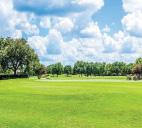
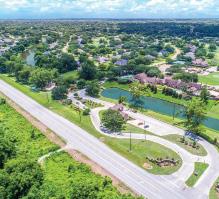
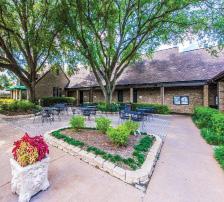

WRITTEN
BY
DANIEL McJUNKIN
This is a story about the centurylong rise and fall of the village of Pittsville, Texas. It is an illustration of how vision and planning impacts cities and how a lack of vision literally led one town to ruin.
The Texas State Historical Association has recorded a brief history of Fulshear, Texas as well as that of the village of Pittsville, Texas. The two towns were born of local landowners. Through opportunities, choice, and change, only one of the two towns would have a future.
A historical marker along the west side of FM 359 between Fulshear and Brookshire alerts passers-by to the approximate location of the all-but-forgotten village of Pittsville. According to the location of the sign, the community was located approximately 3.2 miles north of the current City of Fulshear along what is now FM 359. Except for the historic marker, little remains of Pittsville, short of fading family memories, archived historical photographs, and opportunities sadly missed.
According to the historical marker dedicated and placed on the site in 2012, the village of Pittsville, Texas was founded in the 1840s. Pittsville was named after

the major store owners in the area, A. R. and Amanda (Wade) Pitts. The Pitts’ were among the area’s early settlers. Their store must have been a veritable anchor to the community as the village enjoyed relatively consistent growth over the next twenty years.
In 1860, the village of Pittsville claimed 240 residents and by 1870, Pittsville appears to have been an up-andcoming town, complete with a post office, a school, a photo studio, and other essential services such as a blacksmith and millinery as well as other businesses. These were certainly the types of businesses and accoutrements one would expect of such a young, but growing community.
As time progressed, Pittsville achieved a true milestone in the life of the small, but growing village. This came in the form of what today’s governmental leaders would call increased mobility.
Originally promoted in 1870, The “Western Narrow Gauge Railway Company” was planned to run from St. Emanuel and Commerce streets in Houston to San Antonio and points far to the west. Its founders offered investors a grandiose vision, which, due to insufficient funding and ongoing financial troubles, would never be fulfilled.
Some in the Pittsville community expressed their excitement regarding the proposal to build a railway line so close to Pittsville. Clinton Drake, in his essay titled “The Pittsville Neighborhood, Fort Bend County, Texas” reports of a letter from Lee Nesbitt in January of 1871 in which the writer states:
“A lively interest is felt here in the success of the Narrow Gauge Railroad; as our whole trade lies in the direction of Houston. The connection would be of great material benefit. It would bring this productive section almost to the suburbs of your flourishing city. Two hours time would take us the thirty miles distance and the effect of it would be to rapidly settle up this neighborhood, make it the chief source of supply for your market of every variety of country produce.”
The relatively close proximity of a railroad that could take their agricultural products to markets in Houston in hours instead of days appears to have meant greater economic opportunities for those in the growing area. Pittsville, it may have seemed, was destined for great things.
The railroad broke ground in 1872. It got off to a slow start as actual construction didn’t actually begin until 1875, at which time it was renamed the “Texas Western Narrow Gauge Railway Company”. Over the next two years, the railway would extend its westerly reach forty-two miles from downtown Houston.
As it pushed westward, the Texas Western passed through the areas to the south of what would later become Katy. The railroad continued along a northwesterly path that would bring it to approximately four miles northeast of Pittsville. From there, the railroad continued through an area to the north of what would become Brookshire. The railway construction paused when the tracks reached the newly-formed railroad town of Pattison, Texas in 1877.
Within two years, hard times befell the poorly capitalized railroad. After suffering a financial failure and a subsequent bankruptcy in 1879, followed by a reorganization in 1881, the railroad was renamed the “Texas Western Railway Company”. Following the reorganization, the line was extended from Pattison, across the Brazos River and is reported to have entered Sealy, Texas by 1882. Within ten years of breaking ground, the railroad had a new name, new owners, and it had grown to what was to be its ultimate length of 52 miles.
It is documented in regional historical archives and often rumored in local lore, that Pittsville missed a golden opportunity to secure its anticipated place in history. In the late 1880’s, the San Antonio & Aransas Pass Railroad (SA&AP Railroad) was expanding its rail system in an effort to serve markets as far south as Corpus Christi, Texas. To do so, the railroad needed a level, cost-effective route. It turned out that Pittsville was the preferred location for the SA&AP Railroad as it happened to be well aligned for the intended expansion area.
The SA&AP Railroad offered Pittsville property owners the first right of refusal on the deal of a lifetime. The SA&AP Railroad asked Pittsville property owners to provide the right of way for the new railroad in exchange for the benefits that a railroad would bring by coming through their property.
Monday-morning quarterbacks might too-quickly question the reasons that a community might have for rejecting the increased mobility that a railroad would represent today. Regardless of knowing the reasons why, we do know that Pittsville refused the SA&AP Railroad’s offer outright.
There are any number of reasons as to why Pittsville rejected the SA&AP Railroad’s overture. It is said that some local ranchers felt the noise would frighten their cattle. It is also said that some of the landowners simply didn’t want to provide the right of way.
Mr. Ken Stavinoha, Railroad Historian with the Rosenberg Railroad Museum, recalls a quote to the effect of “... the leaders of Pittsville ‘saw no future for a town on a railroad’.” He says “This would indicate that Pittsville did not consider itself as being served by a railroad and wanted nothing to do with one.”
At the rejection of their offer, the SA&AP Railroad, remained intent on completing its objective and had no choice but to look elsewhere for willing landowners. As it turned out, they found one just over three miles to the south of Pittsville.


Churchill Fulshear Sr., was an “Old Three-Hundred” settler that had received a land grant from Mexico in 1824. He was the plantation owner and family patriarch that originally settled the area to the south of what would become Pittsville. By the 1880’s, his son, Churchill Jr. had inherited his father’s land, holdings, and fortune. More importantly, by all appearances, he had also acquired and refined his father’s business acumen.
There is no record of the conversations and negotiations that Churchill Jr. must have had in order to facilitate the railroad right-of-way and the transaction that made the railroad passing through his property a reality. Neither is there a record of Churchill Jr.’s plans, visions, or even his mindset related to advancing his own financial agenda. History does, however, record what happened in 1888 after Pittsville rebuffed the SA&AP Railroad’s offer. Churchill Fulshear was ultimately asked to provide the right-of-way for the new railroad.
In 1888, Churchill Fulshear Jr. decided to embrace the SA&AP Railroad by providing the railroad right-of-way through his property. This decision, combined with the economic coup that it would ultimately represent, must have set him apart from other area landowners. Having a railroad on property that he controlled would put his holdings on the doorstep of an ever-expanding marketplace.
The railroad could certainly put him in the position of leading the areas growth. So it was in 1890 that the railroad platted the town of Fulshear. Its footprint is forever memorialized in Fulshear’s downtown streets that are still in place today.
The new SA&AP depot in that was built in Fulshear was slightly more than three miles from Pittsville.
Although the SA&AP Railroad is no more, its impact reverberates even now, 124 years after Fulshear’s founding in 1890, in the Fulshear area’s mobility planning. FM 1093, for example, parallels the original SA&AP Railroad rail right-of-way. The presence of FM 1093 has led the way for many thousands of acres of development in and around Fulshear and to tens of thousands of acres to be developed in the growing cities beyond.
The corridor created by the railroad in 1888 has made a way for the improved mobility that has been provided by the Westpark Toll road. The investment made in this now-indispensable mobility corridor has been singly-responsible for increasing access to business, employment and shopping centers of Houston’s vibrant Galleria and Downtown areas.
The SA&AP Railroad certainly did set the stage for the growth that the City of Fulshear now enjoys and is, in many ways, still making plans to accommodate.
As a visionary, Churchill Jr. showed vision and judgment in his approach to doing business and improving access to
In 1890, the same year that Fulshear was laid out, the SA&AP Railroad went into receivership.
Churchill Fulshear, Jr. died in 1892, just two years after the town bearing his family name was founded.
In 1892, the same year that Churchill Fulshear, JR, died, the SA&AP came out of receivership at which time the Southern Pacific Railroad gained effective control of the SA&AP.
In 1992, one-hundred years after the death of Churchill Fulshear, Houston METRO acquired the SA&AP Railroad right of way, but allowed railroad operations to continue.
In 1996, one-hundred years after the Texas Western Railway ceased operations, the Southern Pacific merged with the Union Pacific Railroad.
Union Pacific continued to operate the rail line until 1999 - one hundred years after the Texas Western Railway was abandoned.
After Union Pacific ceased operations, METRO removed the tracks and sold most of the gravel ballast.
Fort Bend County is currently finalizing plans to acquire the railroad right-ofway from Houston METRO all the way to Eagle Lake.
After Fort Bend County takes ownership of the SA&AP Railroad right of way, Houston METRO will retain the right to someday utilize the corridor for future commuter rail.

Jr. undoubtedly saw that a new railroad traversing the area would bring vast improvement to how he got products to market and how business was done in the area. He clearly wanted to be a part if it.
Even though the SA&AP Railroad had come through Fulshear in 1890, and clearly claimed its share of the railway cargo and passenger transportation market along its path, some might think that the Texas Western Railway would still be able to compete on some level. After all, farmers and ranchers in the areas in and around Sealy, Pattison, and Brookshire as well as those in Pittsville and Katy still had to get products to and from markets in Houston. Considering that the Texas Western Railway was still the best option to serve these areas due to the proximity of the railway, it is reasonable to believe that there must have been plenty of business for the Texas Western Railway, right?
By 1893, the well-financed Missouri-Kansas & Texas railroad (MK&T) had out-maneuvered the Texas Western Railway Company by entering Houston market area from Waco and into Sealy, Texas. By the time the MK&T railroad steamrolled into the area, their rail line was already providing rail service to San Antonio and passed through many of the towns to the west that the Texas Western Railway Company had previously planned to someday serve.
It must have been a dark day for the Texas Western Railway Company, when the MK&T railroad crossed westward from Sealy and continued laying their tracks. In a move that would sap what remained of the Texas Western railway’s business, the MK&T would establish Brookshire and then Katy as new railroad towns,
complete with their own depots along a much better railroad.
The new MK&T depot in that was built in Brookshire was just over four miles from Pittsville.
As fate would have it, the MK&T’s tracks intersected with the Texas Western’s tracks between Brookshire and Katy, in a location between what are now Woods and Igloo Roads near HWY 90. This symbolic severing of the rails, would end all hope of the Texas Western Railway recovering its former glory.
As often happens when technologies collide, there was no way to overcome the fact that the two intersecting railways were simply not compatible with one another. The Texas Western Railway was, from its inception, a narrow gauge railway. By definition, the distance between its rails utilized a 3’ 0” “narrow gauge” standard.
The MK&T, on the other hand, was created to be a “standard gauge” railroad. Its design utilized a wider track width of 4’ 8-1/2”. Being designed as a standard gauge railroad, the MK&T’s cars were considered more stable and potentially safer. Due to the improved rail standard, the MK&T’s trains had greater capacity and could achieve greater speeds. In short, the MK&T was a better railroad than the soon-to-be-outdated Texas Western Railway.
The differences between the gauges of their tracks meant that the two railway companies could in no way share the tracks. This unavoidable incompatibility certainly sealed The Texas Western Railway Company’s fate as there was no way to share the MK&T’s tracks.
Though it was once considered a useful and costeffective regional railroad, it took just sixteen years for the vision of the Texas Western Narrow Gauge Railway to be eclipsed and confounded by the opportunities and progress presented by the superior railroad technology.
In 1895, five years after the SA&AP Railroad came through the new “Fulshear” area, and just two years after the MK&T rolled into the new “Brookshire” area, the Texas Western Railway was sold. It ceased operations in 1896.
In 1899, twenty-nine years after it was originally promoted, and twenty-two years after it began serving the village of Pittsville, the once proud, state-of-the-art Texas Western Railway was abandoned altogether. By mid-summer of 1900, the tracks had been removed.
For its part, the village of Pittsville struggled to remain viable throughout the coming years. It is reported that after the SA&AP Railroad came through Fulshear that many Pittsville residents and business owners simply shifted their interests and their livelihoods to the newlyminted Fulshear community in order to take advantage
of the improved railroad and the expanding market it brought with it. The eventual exodus sealed the fate of the once-thriving village, relegating Pittsville to be recorded as a footnote to our area’s future and placing it on the path of relative obscurity.
It is reasonable to see how the SA&AP Railroad serving Fulshear, with its increased regional reach, higher speed, and better freight and passenger service, instantly became a better option for farmers and ranchers in the area than was the Texas Western Railway. As well, most would also agree that the MK&T entering the market just three years later, being well financed, spanning three states, and being equally close to Pittsville as was the Texas Western Railway, further sealed the community’s fate.
The issue that truly doomed Pittsville may have simply been the village’s own failure to choose well at a crucial “crossroad” moment. It might have been Pittsville’s own decision to pass up their best opportunity to adapt to the changes brought on by invention, innovation and technology that brought their community to ruin. A different decision would almost certainly have resulted in a different outcome. Had Pittsville embraced the SA&AP Railroad, we might be heralding the growth of Pittsville today instead of Fulshear’s bright future.
It was by the residents’ own choice, not by chance, that Pittsville failed to embrace the change that improvements in technology always bring. As Pittsville’s future ultimately passed it by, it was a lack of vision that brought the once hopeful and confident village to its ultimate decline and downfall.
Pittsville’s last residents are said to have simply migrated away from Pittsville to Fulshear and to Brookshire over the next fifty years. History records that the last residents left Pittsville in the late 1940’s, leaving little to be recovered.
Wisdom teaches that a lesson is best learned only once. By comparing the choices and decisions that Pittsville
and Fulshear each made, we see that the future rewards those who remain willing to pursue it. It is by being willing to support good vision with commensurate investment that a community
is able to keep pace with the opportunities and challenges that invention, innovation, and technology will always bring.
Today, Fulshear is growing, in part, due to the early vision and subsequent decisions of the City’s Founder, Churchill Fulshear, Jr. He deserves credit for the foundation on which Fulshear’s future is being built. Since the time of Churchill Fulshear, Jr., there have been many decisions made that have shaped the current City of Fulshear. Be assured, that in the coming years, there will be many more decisions to be made. Many of those future decisions will have equally significant potential outcomes.
In his ongoing commitment to work with others in order to shape the city’s future, Fulshear Mayor Tommy Kuykendall is continuing the tradition of visionary leadership. Along with the Fulshear City Council and the entire municipal staff at Fulshear City Hall, Tommy and his team are dedicated to capturing, communicating, and fostering the vision that Churchill Fulshear Sr. set into motion when he received his original land grant from Mexico over 190 years ago. Through such dedicated planning, Fulshear’s leaders will surely continue to provide for the growth that is now occurring in Fulshear.
Special Thanks to Jim Vollmar and Ken E. Stavinoha, Directors of the Rosenberg Railroad Museum, for their invaluable assistance and direction that provided important factual elements,that significantly improved the of accuracy and historical context of this article. Thanks also to Lisa Rickert, Program Director for the Rosenberg Railroad Museum, Chris Craven, and Glenn Fair for their assistance and railroad insight.








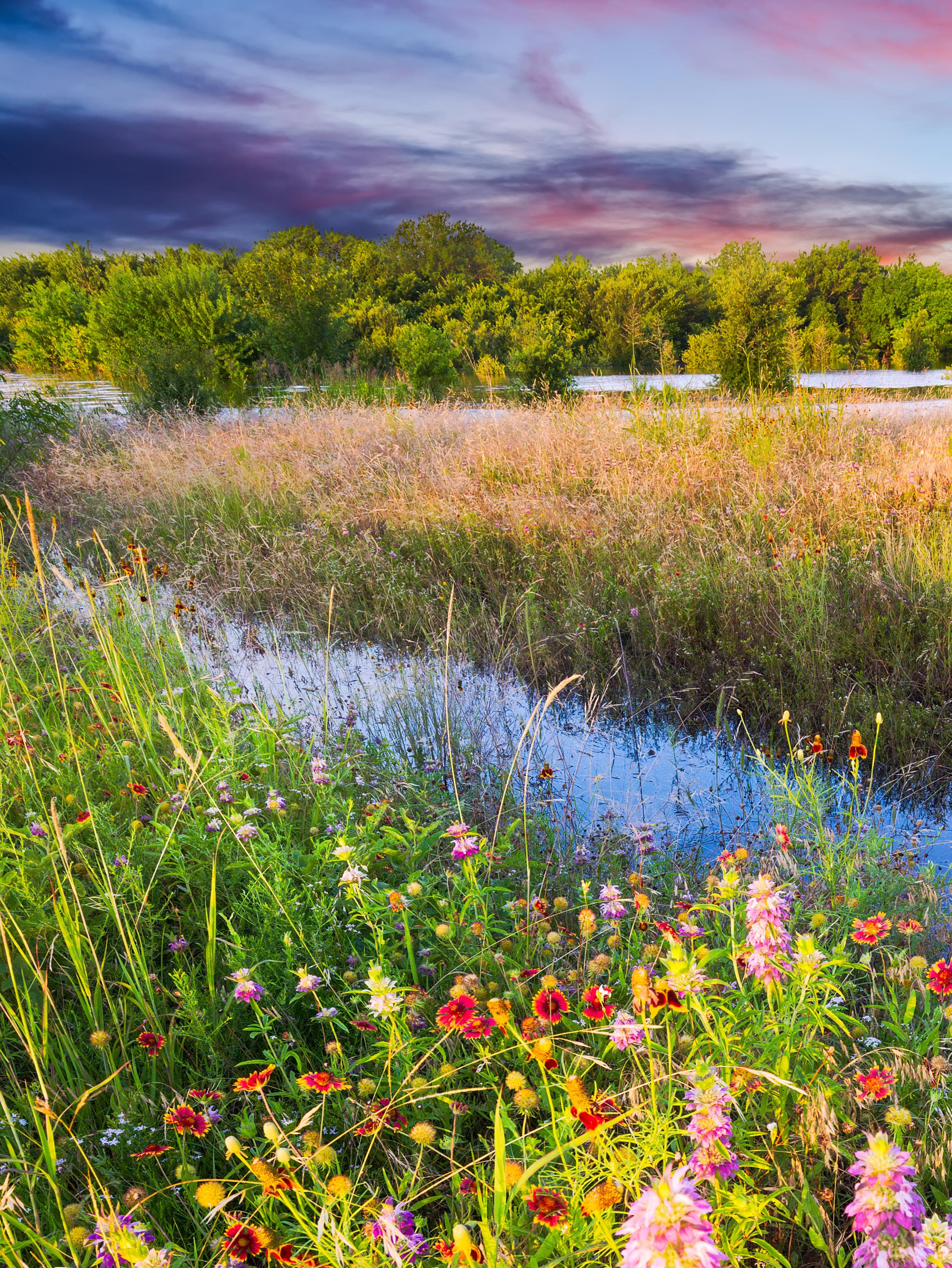
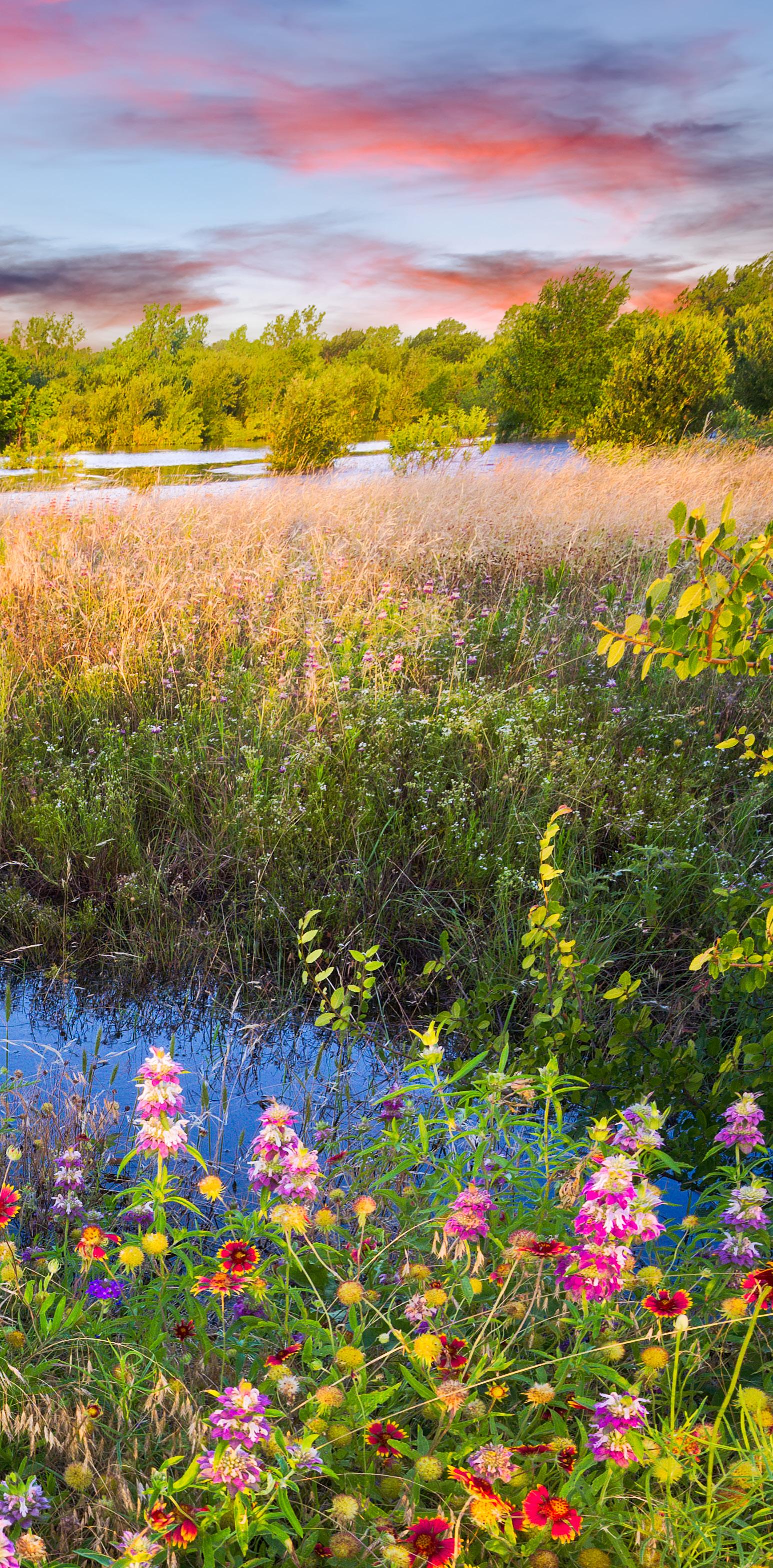





WHF has provided direct assistance to more than 300 farm and ranch owners.
WHF has worked in over 50 counties in Texas.
WHF has provided and implemented over 115,000 acres of conservation plans.
• Management Plan Development 116,240 Acres
• Prescribed Burns Implemented 2,224 Acres
• Herbicide Applications 15,116 Acres
• Cover Crops Planted 7,049 Acres
• Native Grasses and Forbs Planted 5,178 Acres
• Enrolled in Financial Programs 15,476 Acres
• Grazing Plans Implemented 62,312 Acres

1. EDUCATION AND OUTREACH: Direct technical guidance to landowners through planned outreach at conservation and environmental events, field days, workshops, group engagements, and on-site consultations.
2. CONSERVATION PLANS: We engage land managers in the planning of conservation practices with the goal of providing measurable improvement of all natural resources present in each project.
3. IMPLEMENTATION: We are directly involved in the planning and implementation of hundreds of acres of improved management as a result of planned grazing, prescribed burning, rangeland plantings, stream management and other critical environmental elements.
4. COLLABORATIVE ALLIANCES: We engage with like-minded organizations to achieve common goals. This symbiotic relationship is accomplished by co-hosting education and outreach events with allied organizations to inform the public of our land conservation practices and programs.
OUR MISSION: to provide on-the-ground restoration, management, and generational sustainability of prairie habitat for the conservation of soil, water, air and wildlife.
OUR VISION: to accomplish this through resilient prairies and healthy watersheds that will provide benefits to our land and water resources as well as the communities that depend on them.
SHORT TERM GOALS
1. To generate a reserve fund of $500,000 to insure one year’s operating expenses.
2. To establish six new grants from local individuals and corporations or other foundations.
3. To further educate the public on the value of preserved native prairie land and its conservation benefits in terms of carbon sequestration and water retention.
LONG TERM GOALS
1. To create an endowment of $3,000,000 to ensure the future goals can be attained.
2. To secure six new corporate or individual/foundation relationships that will partner with WHF on the continuing conservation programs of WHF.
3. To grow our direct conservation programs from 110,000 acres to 1,000,000 acres over the next five years.
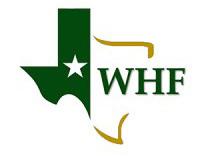
WHF-TEXAS.ORG
PO BOX 75 CAT SPRING, TX 78933
(210) 422-1600
WHF-INFO@WHF-TEXAS.ORG

